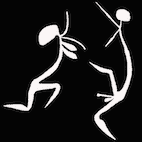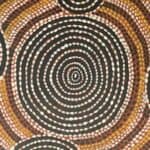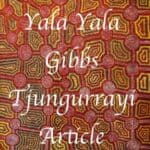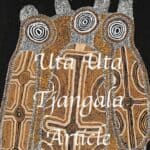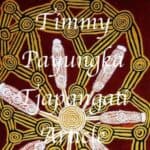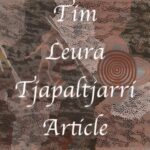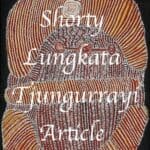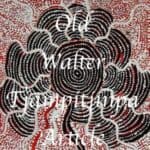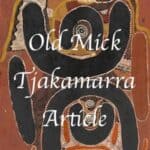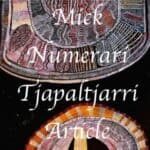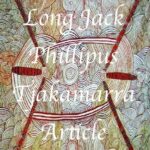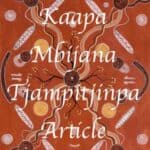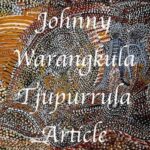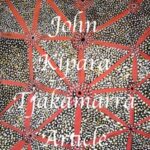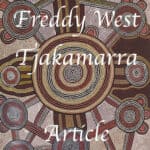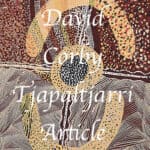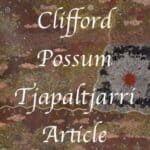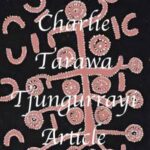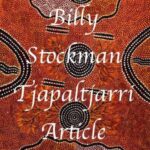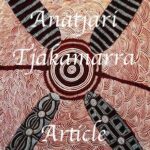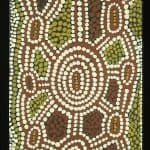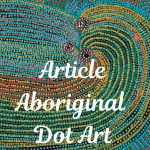Tim Leura Tjapaltjarri Artworks

Tim Leura Tjapaltjarri, a pioneering figure in the Western Desert art movement and a foundational artist of the Papunya Tula school, is best known for the monumental masterpiece Spirit Dreaming through Napperby Country, co-created with fellow Anmatyerre artist Clifford Possum Tjapaltjarri and held in the National Gallery of Victoria. Spanning an extraordinary 6.7 metres, this large-scale Aboriginal dot painting is both a cultural cartography and a profound Dreaming narrative that reflects the deep spiritual connection to Country. Celebrated for its visionary scale and intricate symbolism, the work draws viewers into a richly layered visual landscape, embedding within it miniature renditions of three of Leura’s earlier paintings—thus linking it directly to the genesis of contemporary Aboriginal art in the early 1970s. A key highlight in the story of Australian Indigenous art, Tim Leura’s Kangaroo at Ritjulnya (1982) stands as his most valuable artwork sold at auction, underscoring his enduring influence and the increasing global recognition of Aboriginal art as a significant cultural and artistic legacy.
I specialize in the private treaty sale of early and significant artworks by Tim Leura Tjapaltjarri. If you have an example that you wish to have appraised please feel free to send me images and dimensions.
Tim Leura TjapaltjarriArtworks: Early Mastery and Innovation in Western Desert Aboriginal Art
Tim Leura Tjapaltjarri’s early artworks from the foundational years of the Western Desert art movement in 1971 reveal a remarkable command of linework and deep cultural resonance. As one of the original Papunya Tula artists, Leura’s initial paintings were created on monochrome backgrounds and featured sacred iconography such as churinga, ceremonial objects, and traditional corroboree grounds, reflecting his role as a cultural custodian. During 1971 and 1972, he employed traditional Aboriginal colours—red and yellow ochre, black charcoal, and white pipe clay—to craft works characterized by striking symmetry, much like the early paintings of Kaapa Mbitjana. In a pivotal stylistic shift in 1972, Tim Leura created several untitled abstract paintings, marking a bold departure from figurative motifs. These works showcased intricate dotting techniques and complex overlays of meandering tracks, rivalled in innovation only by Johnny Warrangkula’s groundbreaking contributions. Leura’s custodianship of the Honey Ant Dreaming is evident in at least five documented paintings from 1971 to 1972, each maintaining consistent sacred iconography tied to ancestral ceremonies. His art not only demonstrates technical mastery but also serves as a powerful visual language through which Dreaming stories and Indigenous cultural heritage are preserved.
1971
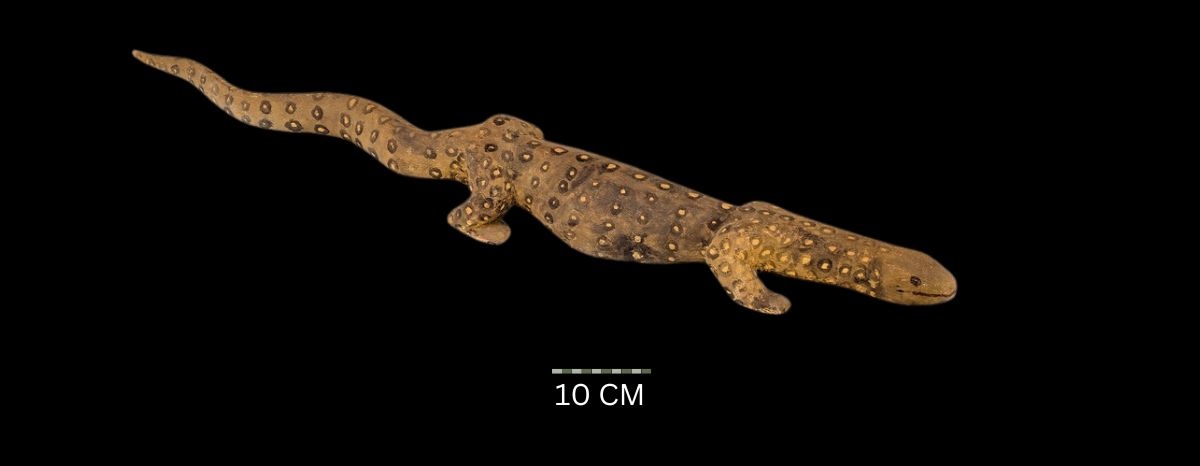
Perentie (Lizard), 1970
Synthetic polymer paint on carved wood,
94 x 14 x 9 cm
Hammerprice: A$5,000
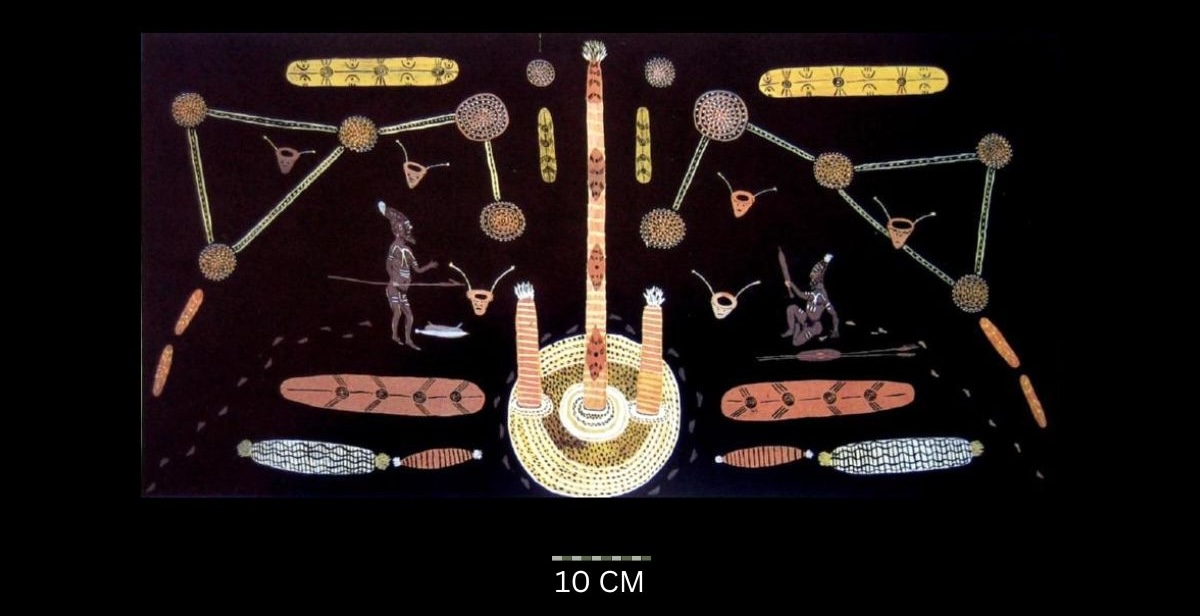
Joke 1971
Synthetic polymer paint on composition board,
46 x 91.5 cm
Hammerprice: A$50,000
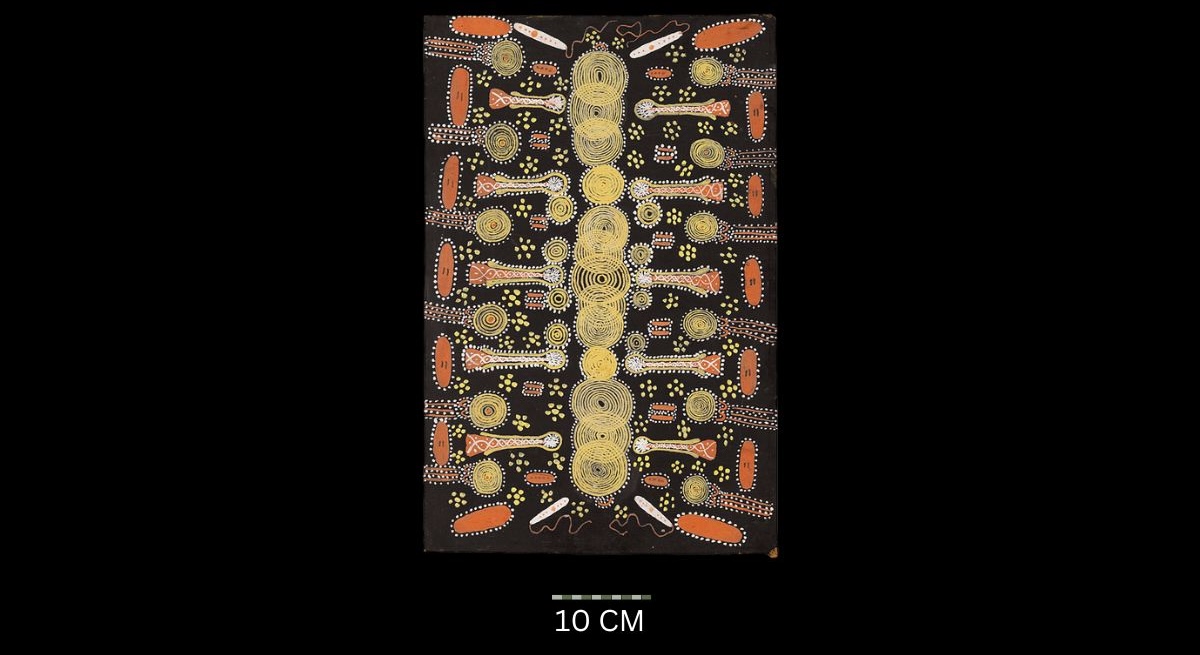
Men’s Dreaming
Synthetic polymer paint on composition board,
53.8 x 34.8 cm
Hammerprice: A$135,000

Rainmaker Bird Story 1971
Synthetic polymer powder paint on composition board, bears artist’s name, title and Stuart Art Centre consignment number 5015 on label on the reverse,
30 x 20 cm
Hammerprice: A$9,500
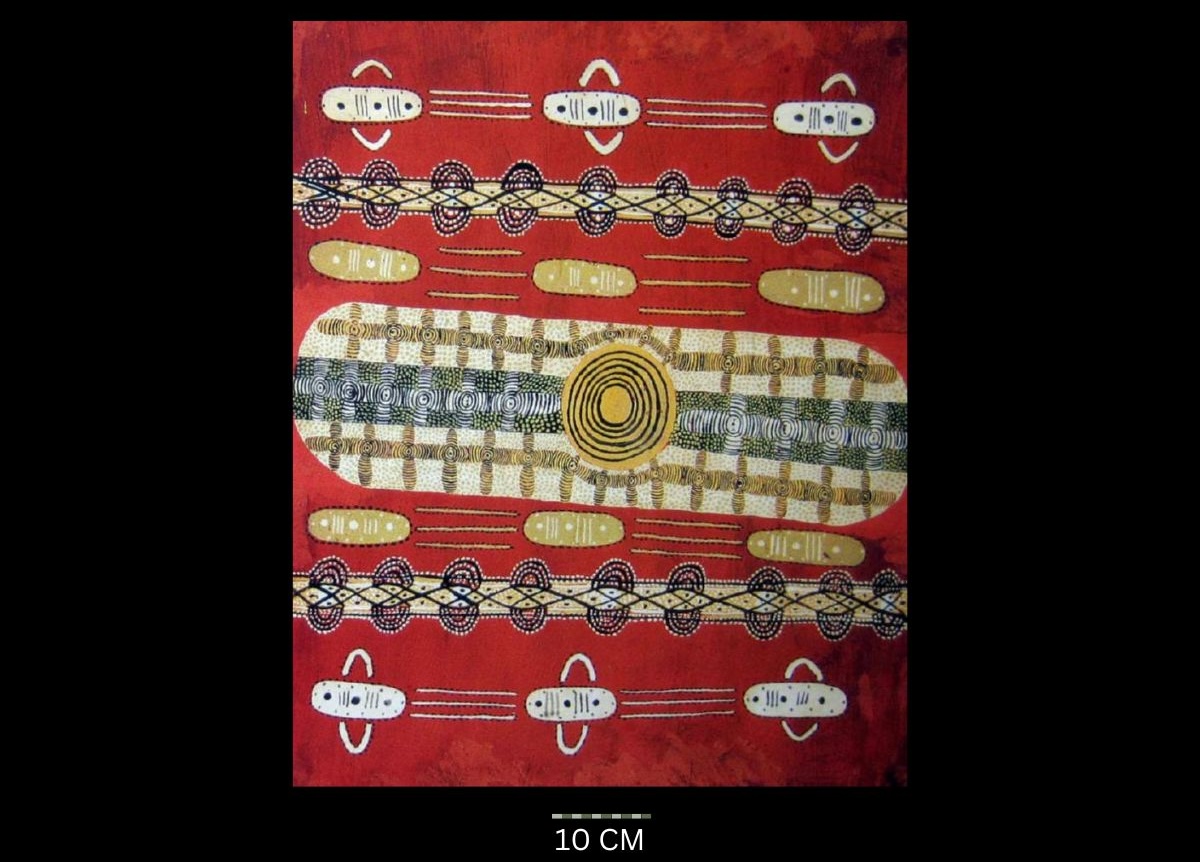
The Honey Ant Story 1971
Synthetic polymer powder paint on board,
76 x 60.5 cm
Hammerprice: A$75,000
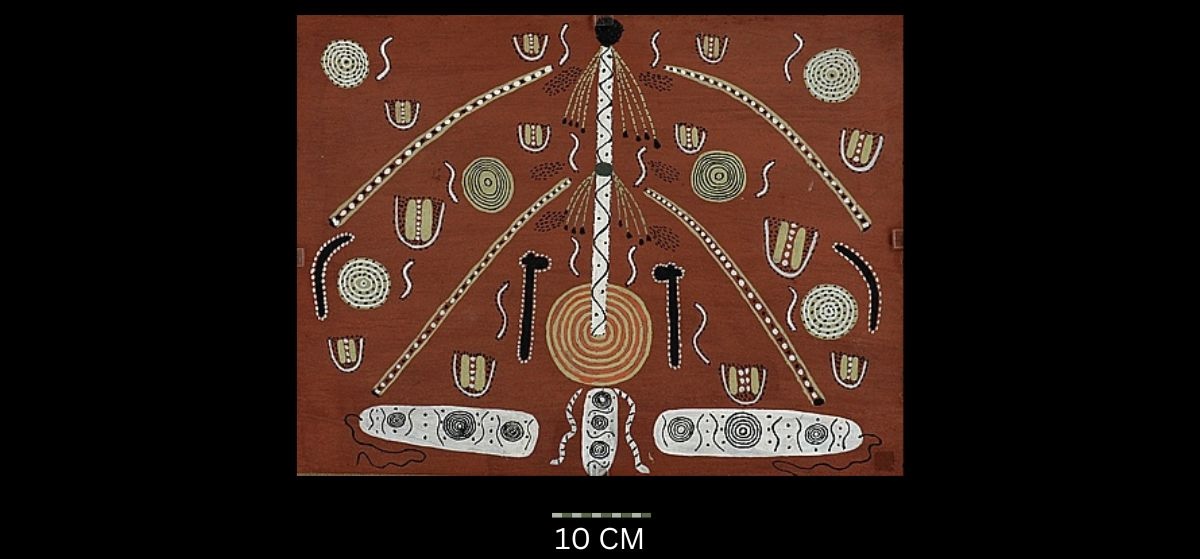
Rain Ceremony Dreaming
Date not recorded but assumed 1971-1972
40 x 60 cm
Hammerprice: A$12,000
Tim Leura Tjapaltjarri Artworks 1972
![Honey Art Story 1972 (Big Ceremonial Honey Ant Dreaming) [Version 8] Tim Leura Tjapaltjarri](https://www.aboriginal-bark-paintings.com/wp-content/uploads/2025/05/Untitled-design-11-15.jpg)
Honey Art Story 1972 (Big Ceremonial Honey Ant Dreaming) [Version 8]
Synthetic polymer paint on composition board,
61 x 45 cm
Hammerprice: A$50,000
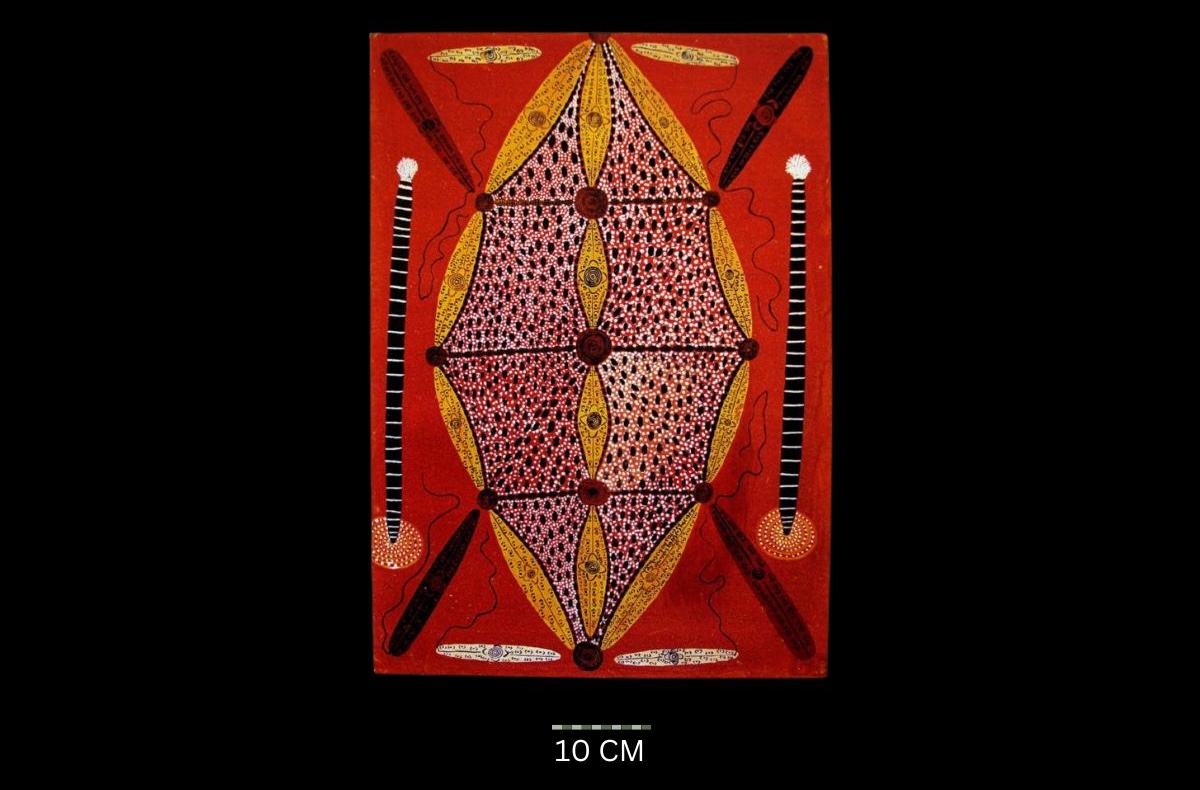
Honey Ant Story 1972
Synthetic polymer paint on composition board, bears the Stuart Art Centre certificate on the reverse with the artist’s name, title of painting, and the consignment number 1000,
65 x 46 cm
Hammerprice: A$40,000
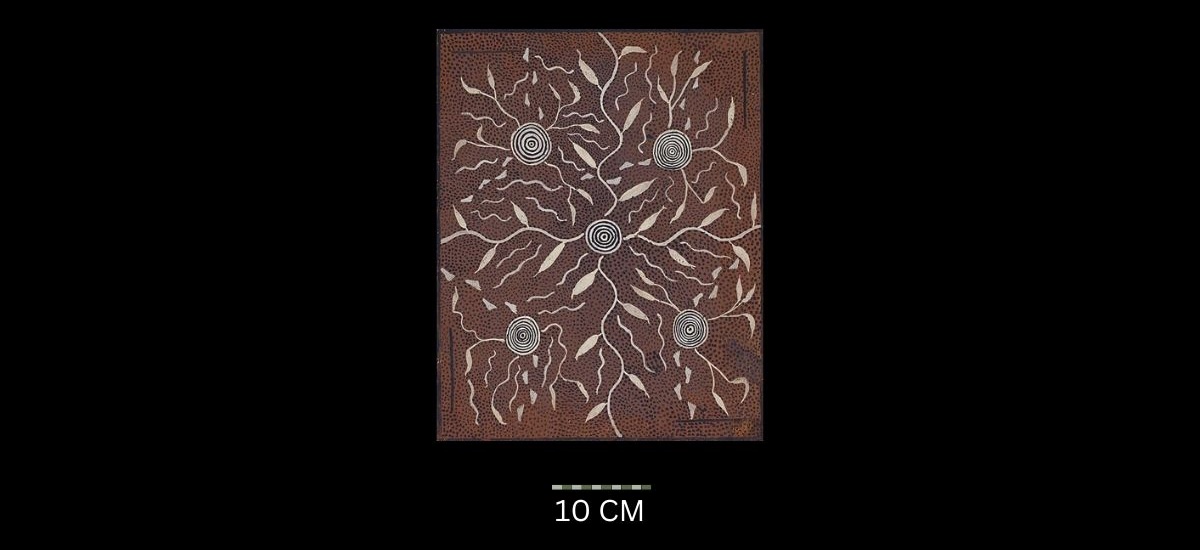
Yam Dreaming (Version 1) (1972)
Natural earth pigments and bondcrete on composition board,
40 x 30 cm
Hammerprice: A$40,000
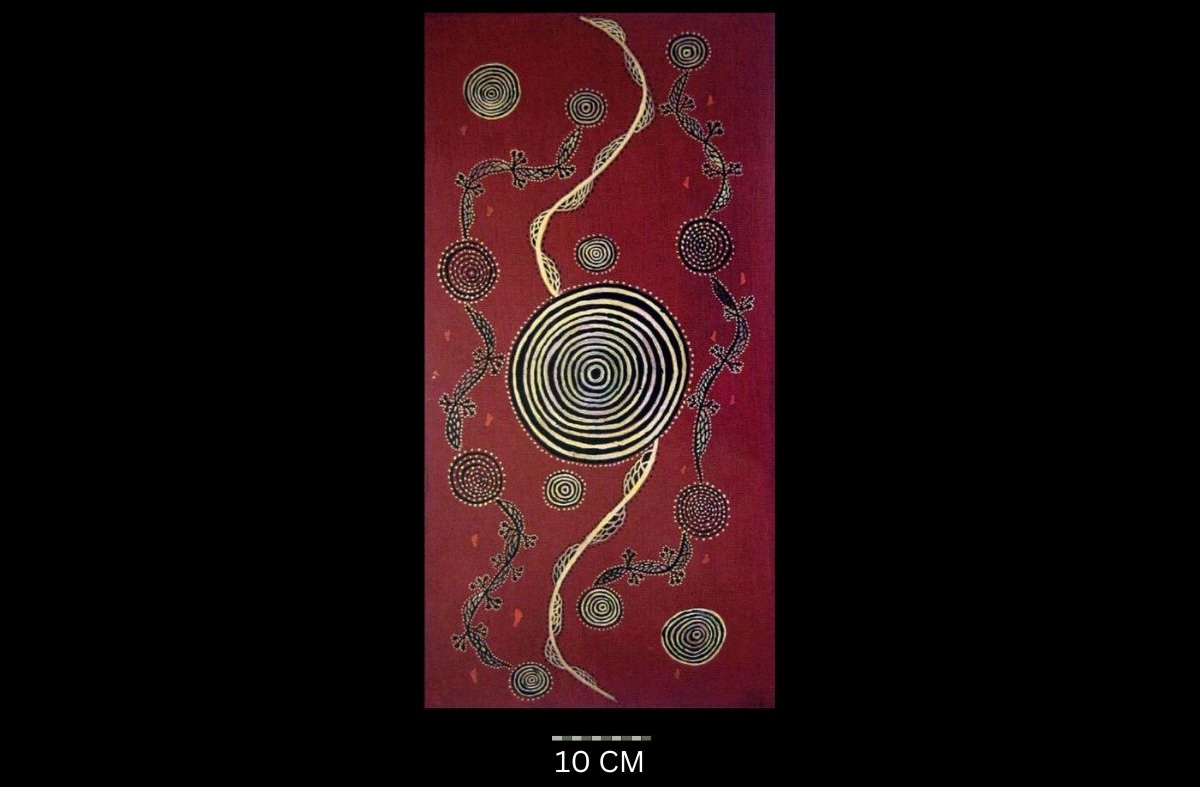
Bush Plum Study
No date recorded but likely 1971-1972
Synthetic polymer paint on board,
69.5 x 35.7 cm
Hammerprice: A$5,000
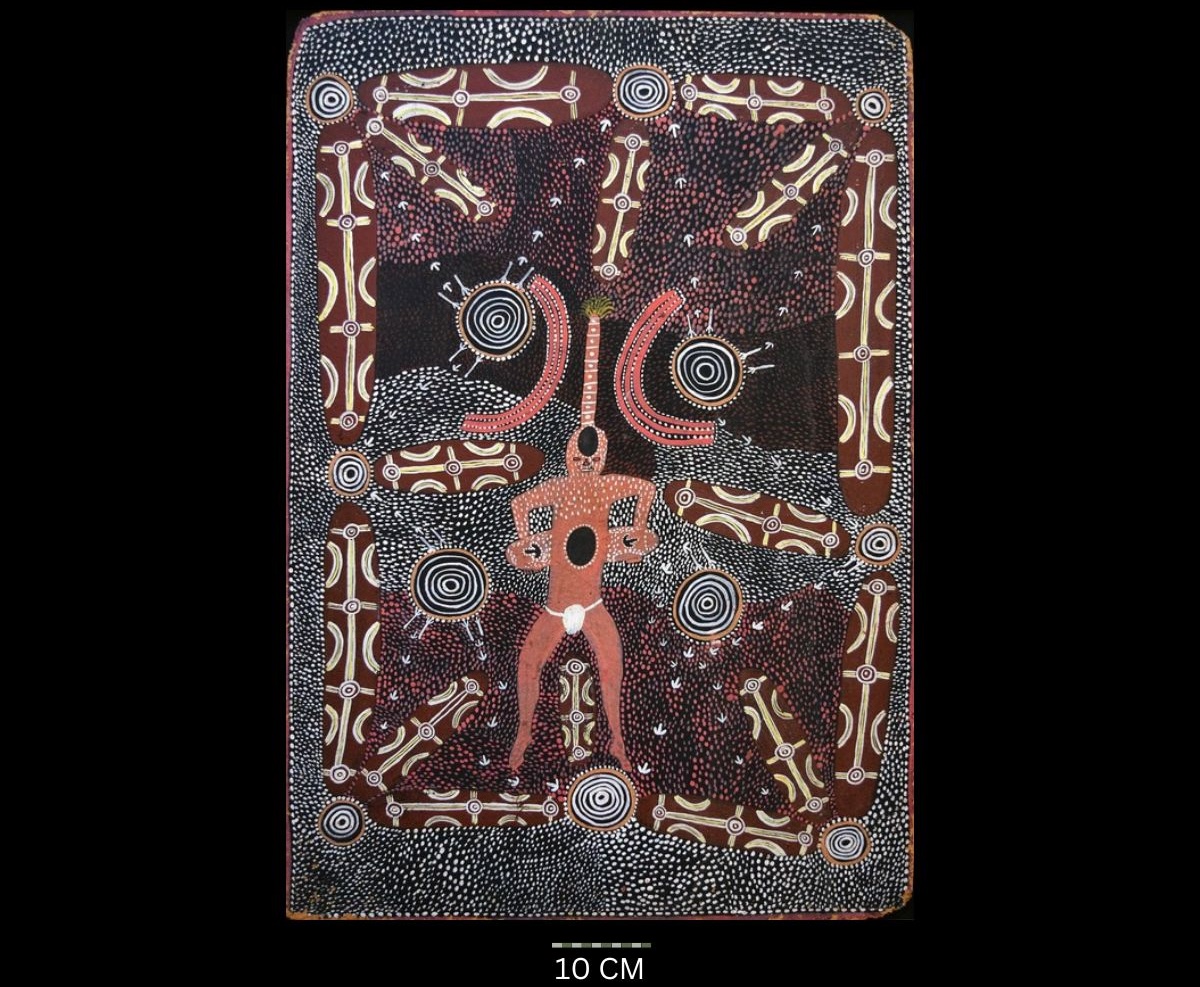
Untitled (Rainmaker Bird Ceremony) 1972
Powder pigment on composition board,
91.5 x 60.5 cm
Hammerprice: A$95,000
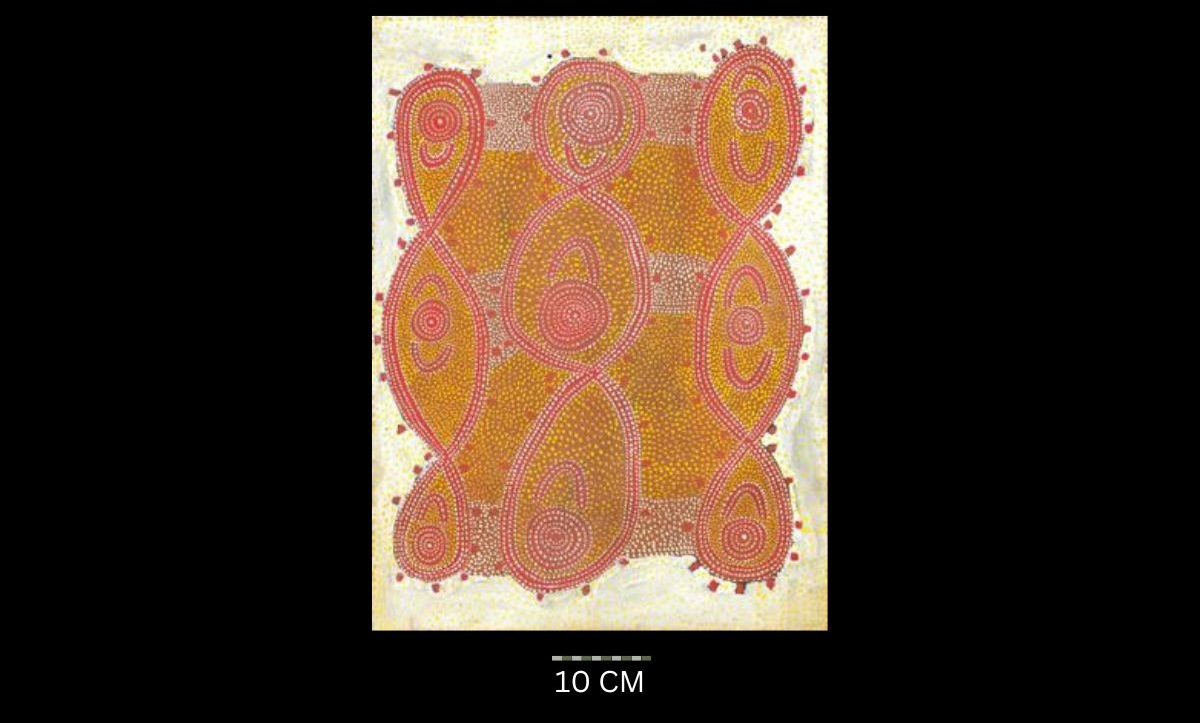
Possum Ceremony 1972
Synthetic polymer paint on composition board,
61 x 45 cm
Hammerprice: A$34,000

Honey Ant Dreaming 1972
Synthetic polymer paint with PVA on composition board, bears artist’s name on the reverse,
40.5 x 10 cm
Hammerprice: A$38,000
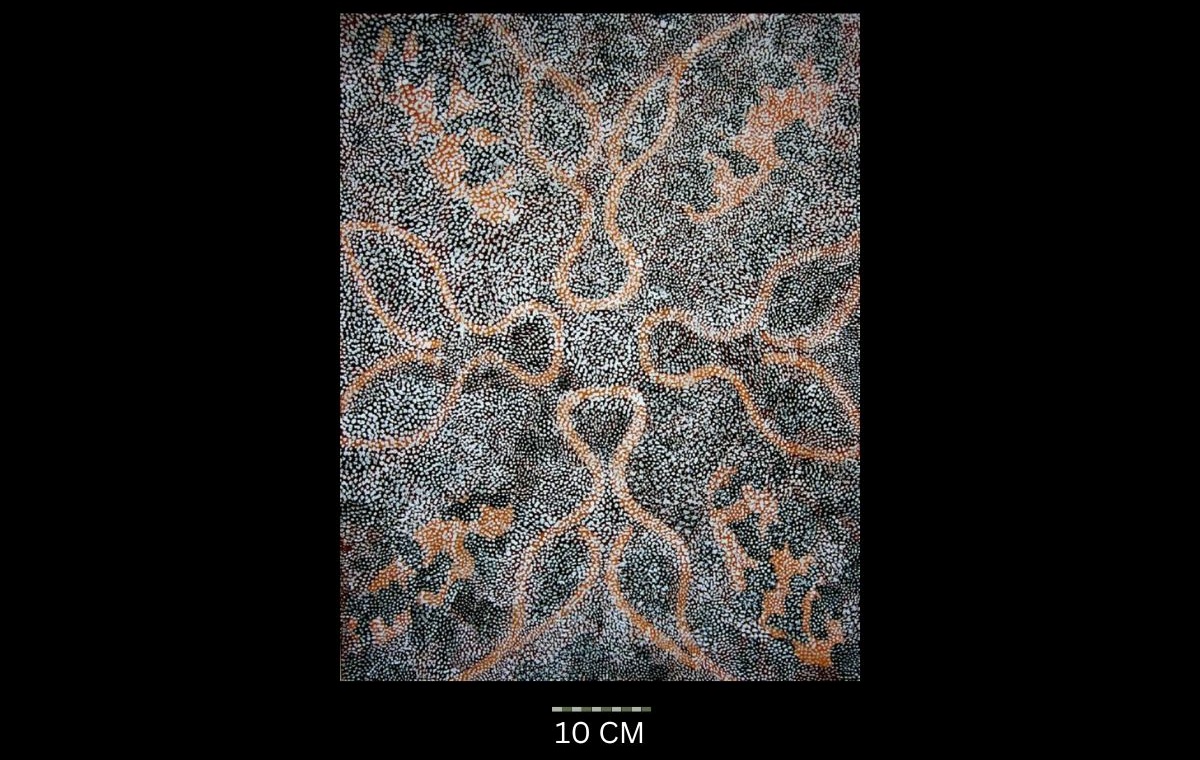
Untitled 1972
Synthetic polymer paint on composition board, bears signed catalogue number 1272115 on reverse,
66.5 x 51.5 cm
Hammerprice: A$40,000
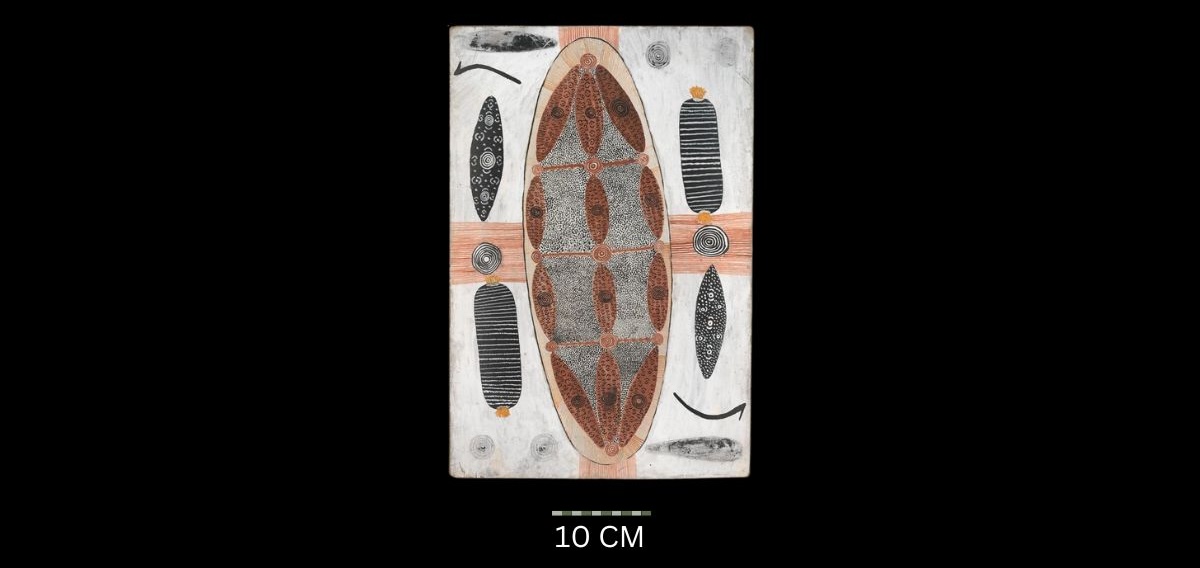
Travelling Honey Ant Dreaming – (Version 7) 1972
Synthetic polymer paint on composition board,
45.5 x 30.5 cm
Hammerprice: A$60,000
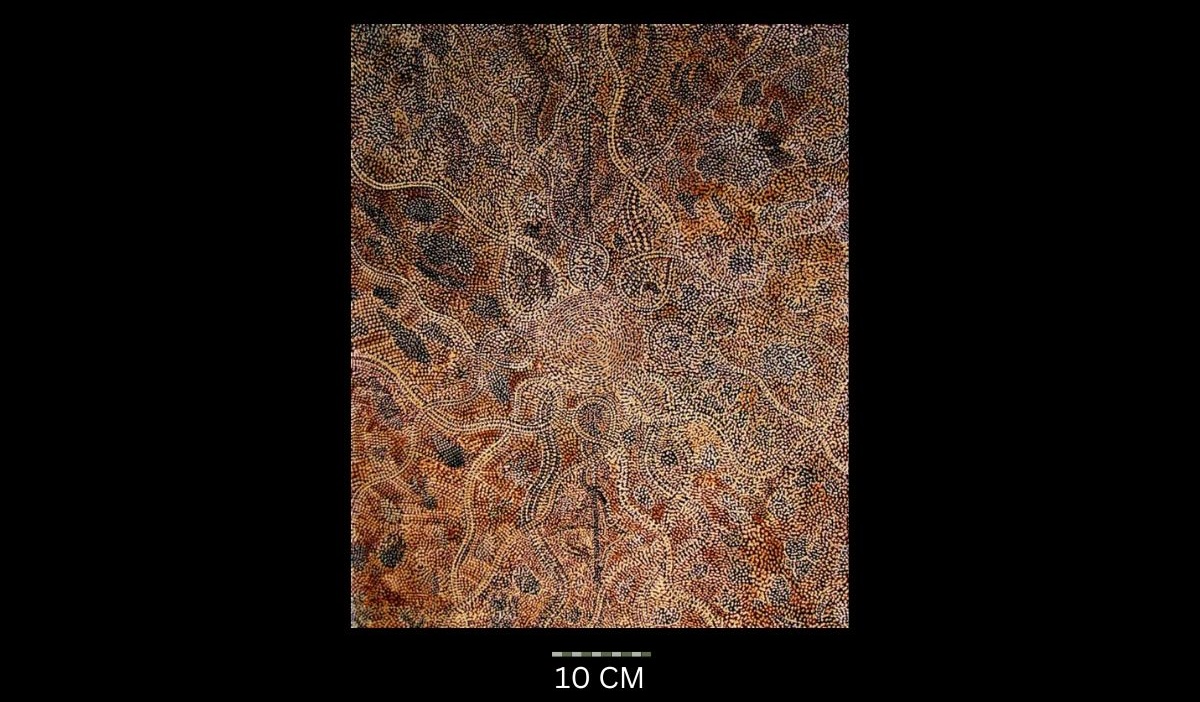
Untitled, 1972
Acrylic, bears consignment No. 19225 on the reverse,
60 x 48 cm
Hammerprice: A$80,000

Honey Ant Dreaming 1972
Synthetic polymer paint on composition board,
60 x 45 cm
UNSOLD
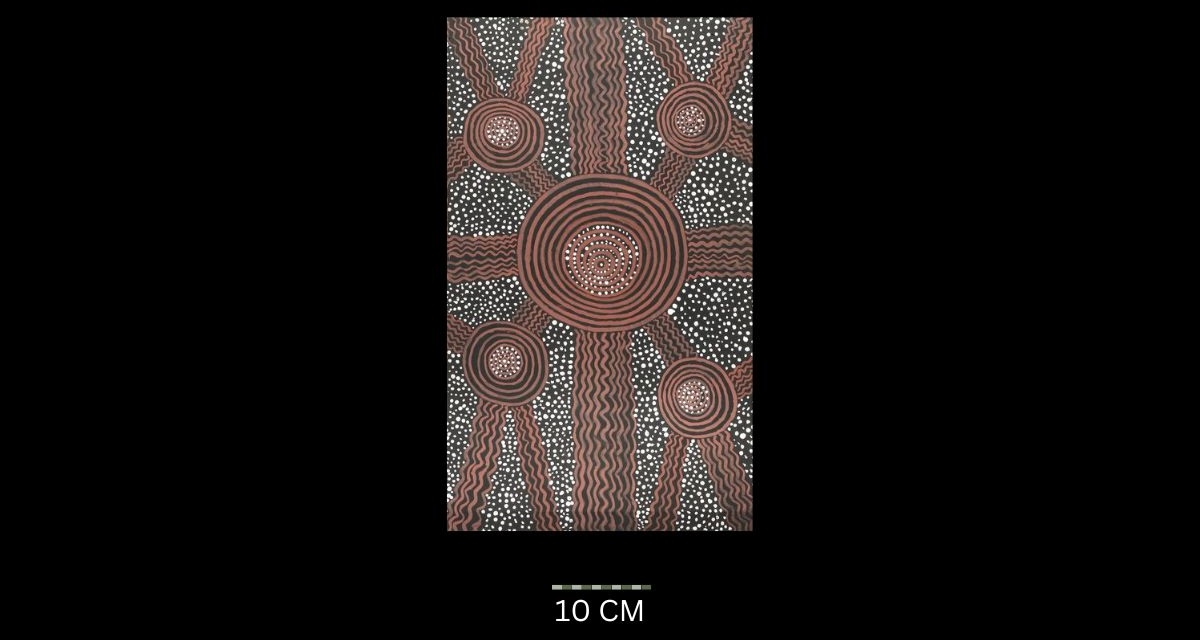
Wild Peanut Dreaming
No date recorded and assumed to be 1972
Synthetic polymer powder paint on board, bears artist’s name, title and Stuart Art Centre consignment number 4012 on a Stuart Art Centre label on the reverse,
51 x 30 cm
UNSOLD
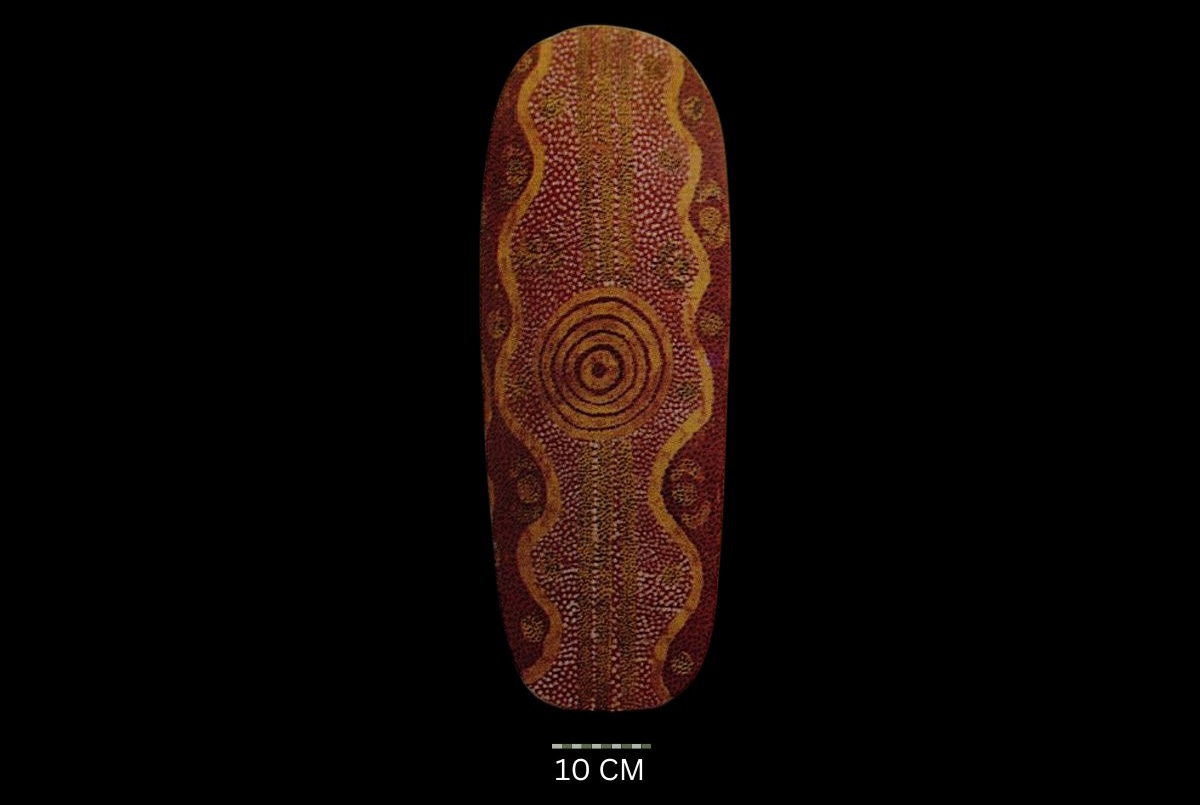
Untitled Painting on a Coolomon 1972
Natural earth pigments and synthetic polymer on carved bean wood, unsigned, bears artist’s name and date on reverse,
67 x 24 cm
Hammerprice: A$2,600
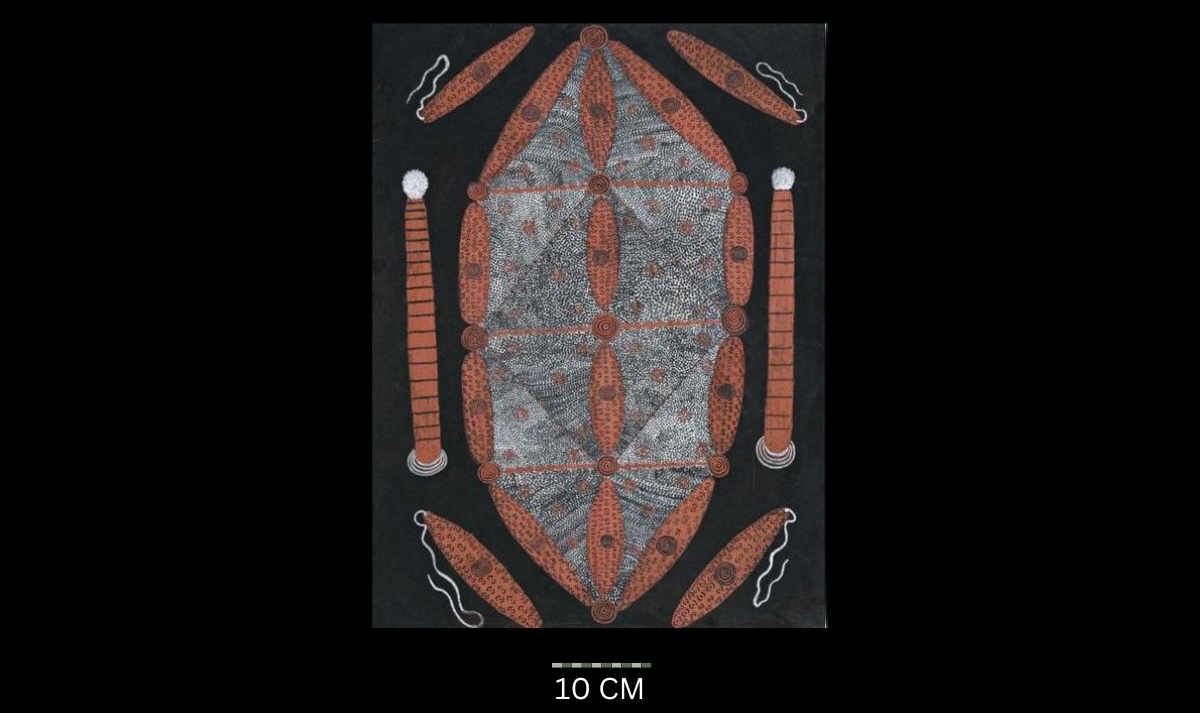
Honey Ant Dreaming 1972
Synthetic polymer paint and synthetic binder on composition board,
60 x 45 cm
Hammerprice: A$80,000
Evolution of Style and Technique: Tim Leura Tjapaltjarri’s Transitional Period (1973–1974)
Between 1973 and 1974, Tim Leura Tjapaltjarri’s Aboriginal artworks underwent a significant stylistic evolution, marked by a broader colour palette that began to include earthy browns, vibrant greens, oranges, and blues—departing from the more traditional red, yellow, black, and white tones of earlier Papunya Tula art. While many of these pieces were still created on composite board, a building material widely used during the early Papunya years, a shift occurred in late 1974 with the increasing use of canvas boards, which soon became the standard. During this transformative period, Leura oscillated between two primary painting styles: finely detailed linear compositions set against monochrome backgrounds, and highly abstract dot paintings featuring intricate dotting techniques and layered, meandering track motifs. These complex overlays subtly veiled the sacred Dreaming stories beneath, addressing rising concerns from Aboriginal communities beyond Papunya that the early Western Desert artworks were revealing too much restricted ceremonial knowledge. As a cultural custodian and skilled innovator, Tim Leura became instrumental in pioneering the use of dots as a visual device to protect and encode sacred iconography, aligning artistic expression with cultural protocol.
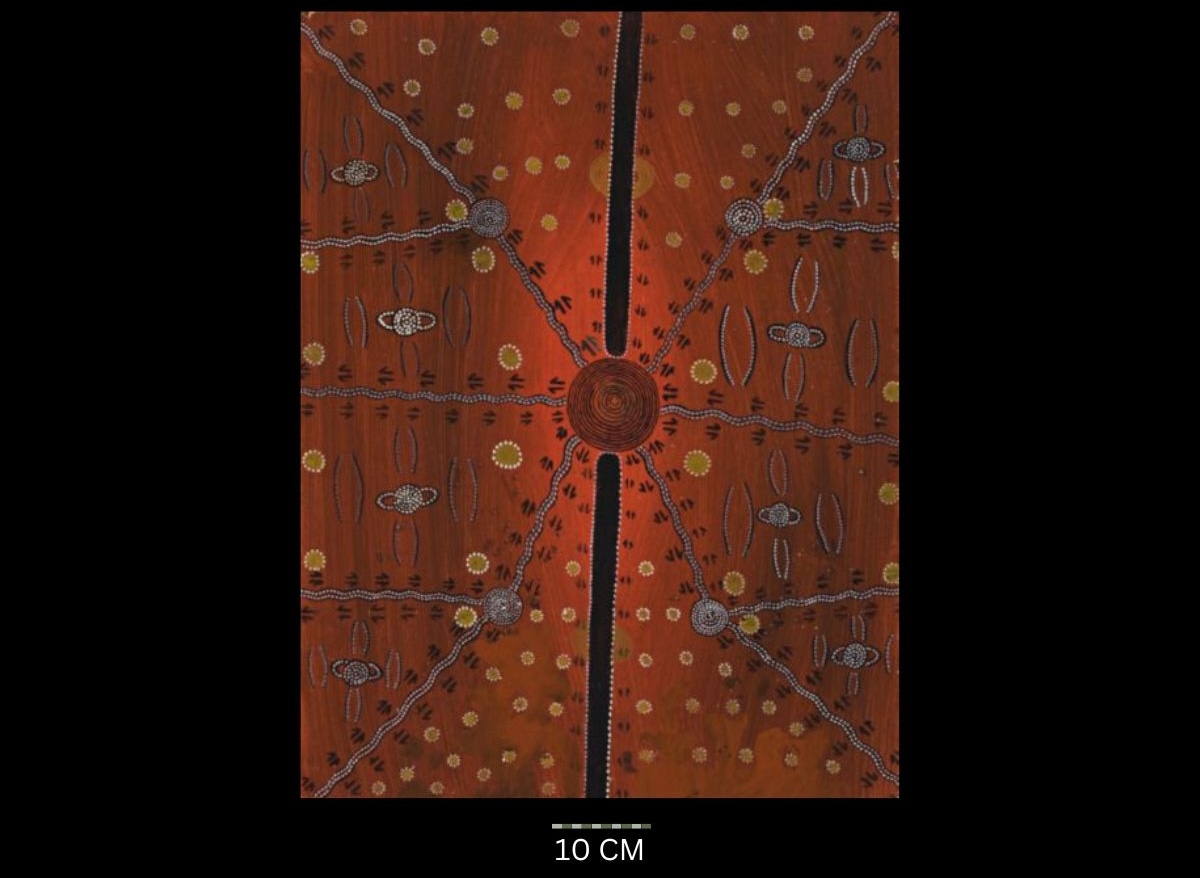
Untitled 1973
Synthetic polymer paint on composition board, bears Papunya Tula Artists catalogue number TL730915 on the reverse,
78.5 x 59.5 cm
(1973)
Hammerprice: A$27,000
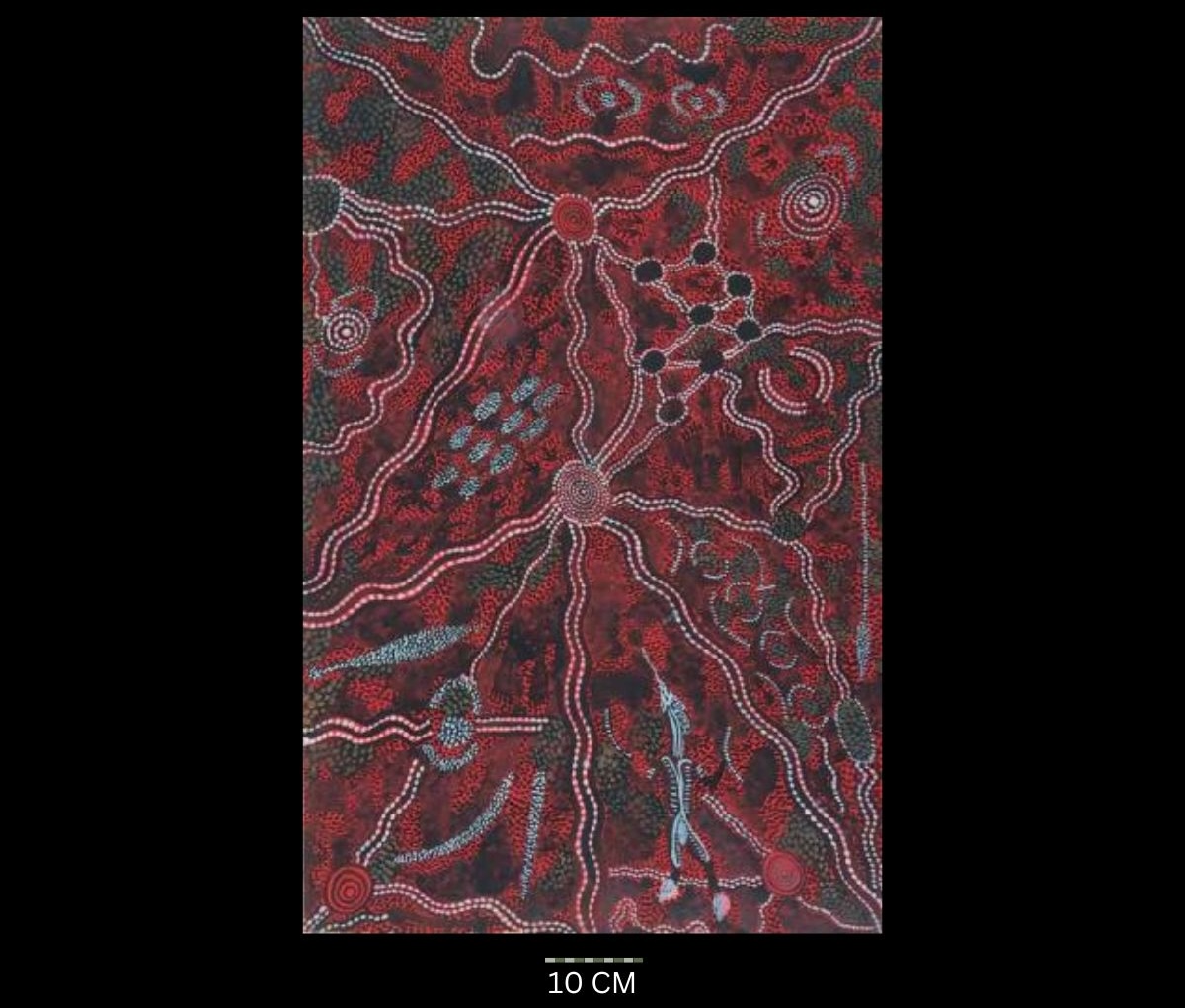
Untitled 1973
Synthetic polymer paint on composition board, bears Papunya Tula Artist’s catalogue number TL731214 on the reverse,
92.5 x 58.5 cm
Hammerprice: A$18,000
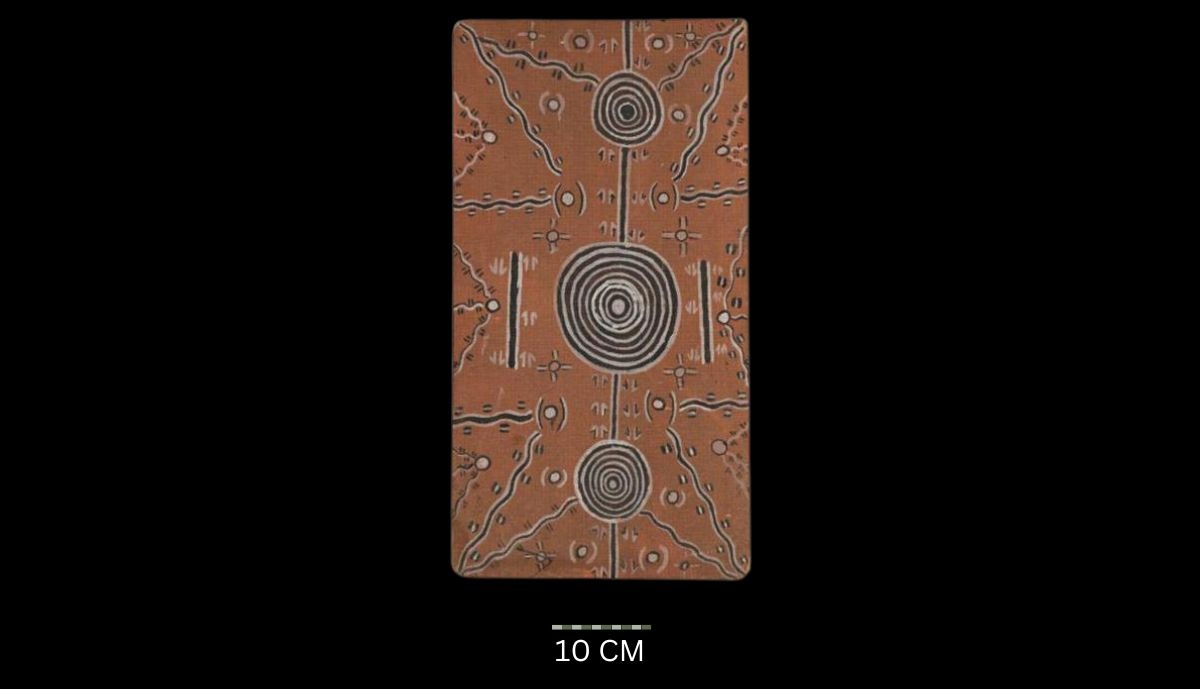
Mala (Rock Wallaby) Story c. 1973
Synthetic polymer paint on composition board, bears artist’s name ‘Tim Jabaljari’ (sic.), and ‘Papunya’ on the reverse,
56.5 x 30 cm
Hammerprice: A$8,000
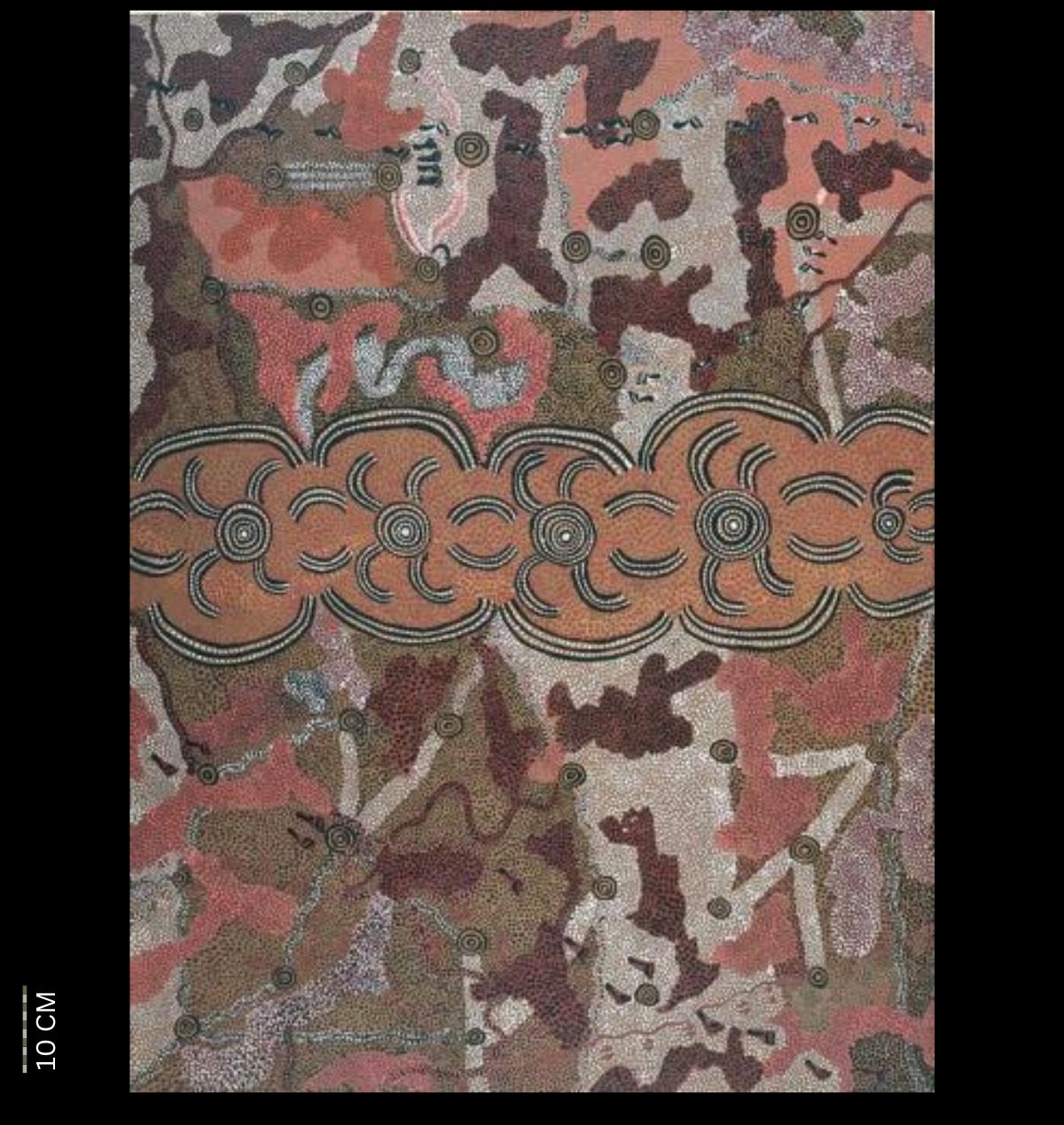
Untitled (Many Stories) 1973
Synthetic polymer paint on composition board,
91.5 x 122 cm
Hammerprice: A$20,000
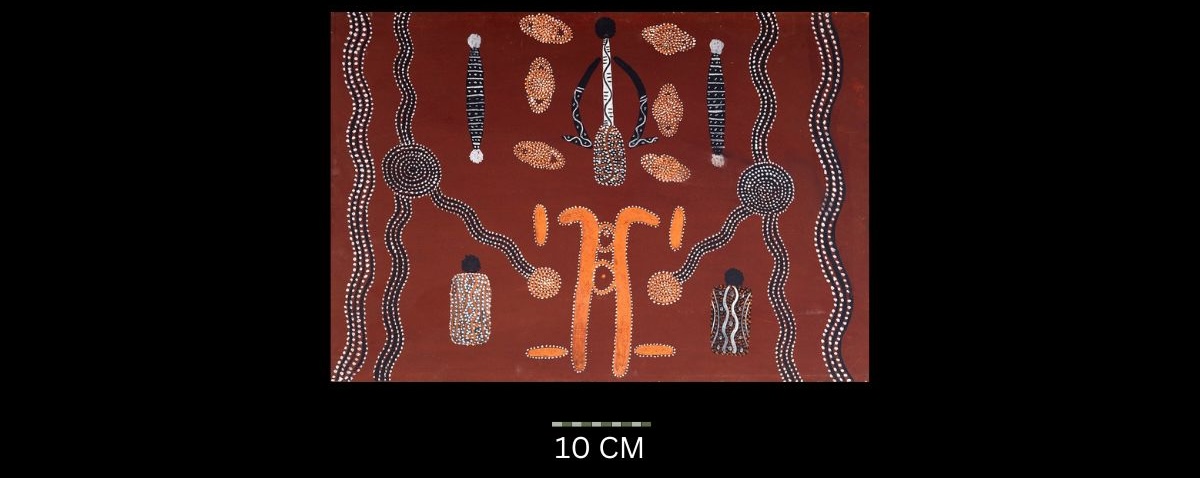
Possum Ceremony Near Napperby, c.1973
Synthetic polymer powder paint on board, bears inscription verso: artist’s name, size, and Papunya Tula Artists cat. TL730604 and description of some of the iconography on the reverse,
36 x 53 cm
Hammerprice: A$15,000
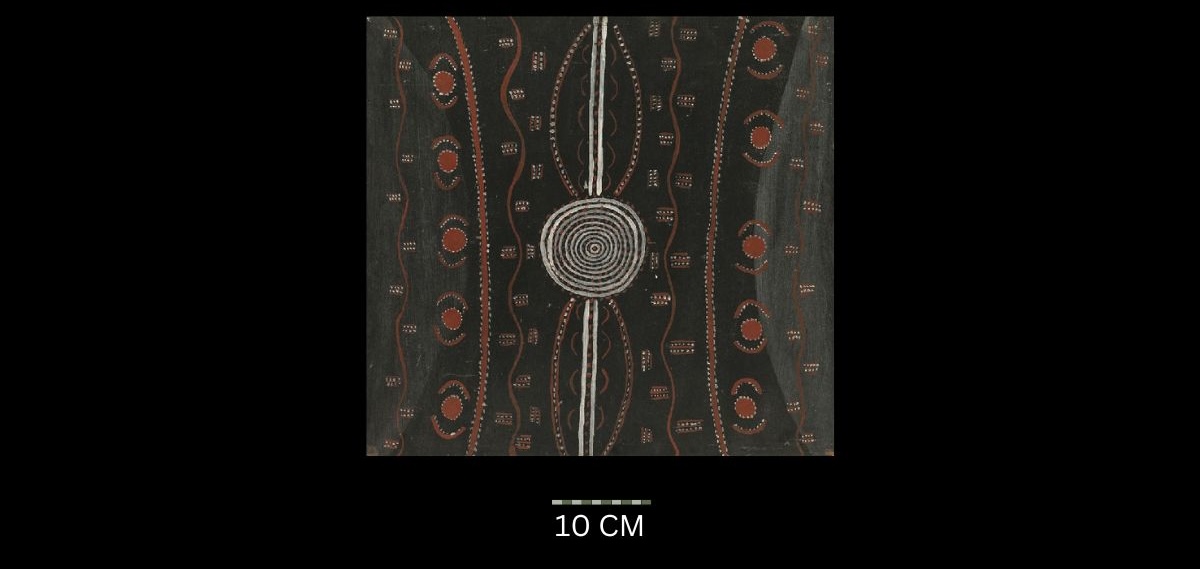
Untitled (1973)
Synthetic polymer paint on composition board,
43 x 46 cm
UNSOLD
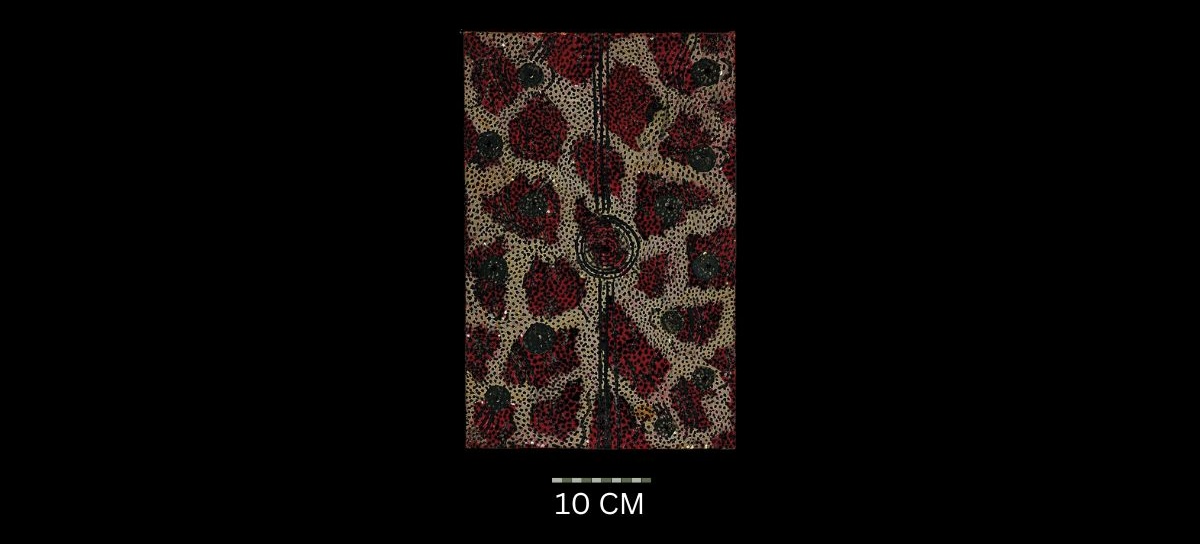
Bushfire Travelling Dreaming (1973)
Synthetic polymer paint on composition board,
41.3 x 26.7 cm
Hammerprice: A$16,000
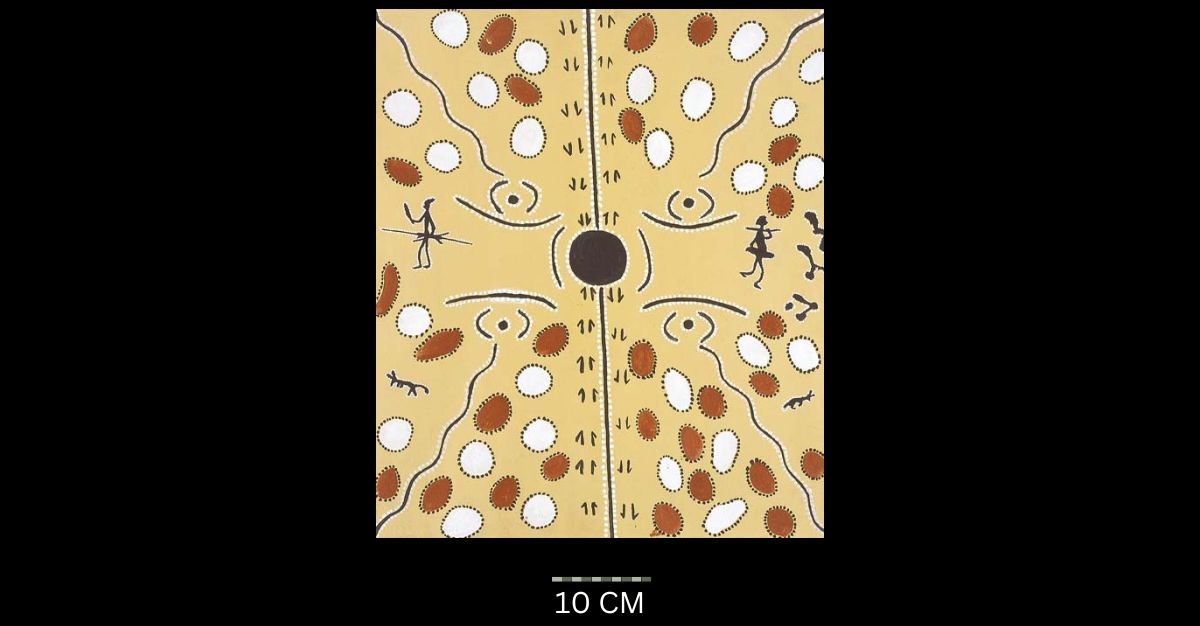
Camp Scene Near Napperby 1973
Synthetic polymer powder paint on board, with Papunya Tula number ‘TL 730-628’ on the reverse,
52.3 x 44.7 cm
Hammerprice: A$20,000
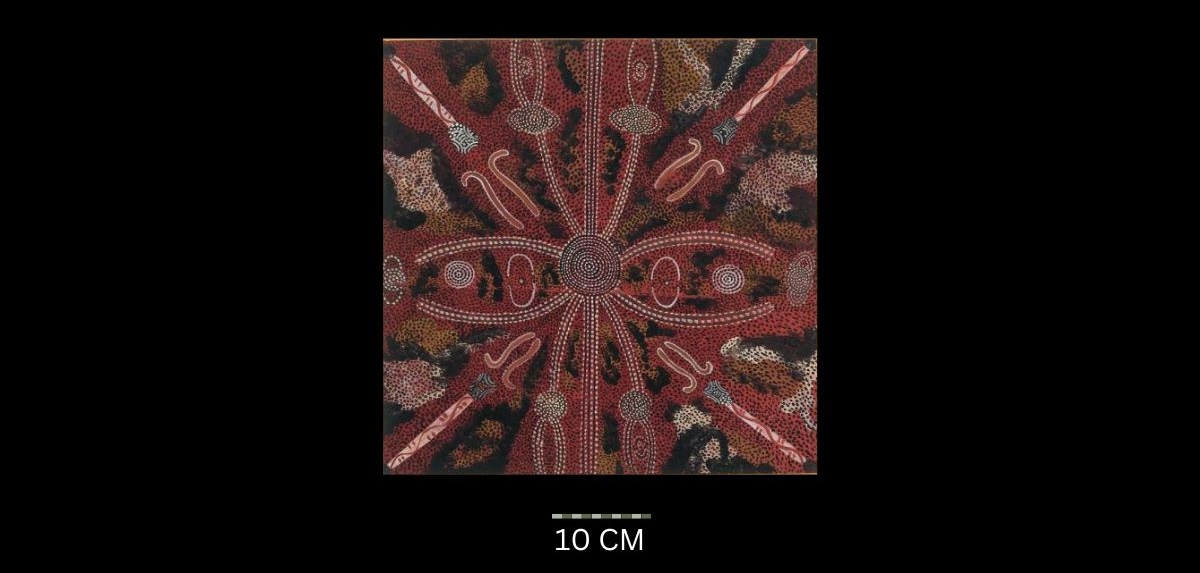
Pulapo (Ngkata) Possum 1973
Synthetic polymer paint on composition board, bears Papunya Tula Artist’s catalogue number TL730608 together with brief notes describing the imagery depicted,
43 x 43 cm
Hammerprice: A$8,000

Teaching Little Children 1973
Synthetic polymer paint on composition board, bears Papunya Tula Artists label with artist’s name, language group, title, date, and catalogue number TL735808 on the reverse,
60.5 x 40.5 cm
Hammerprice: A$6,000
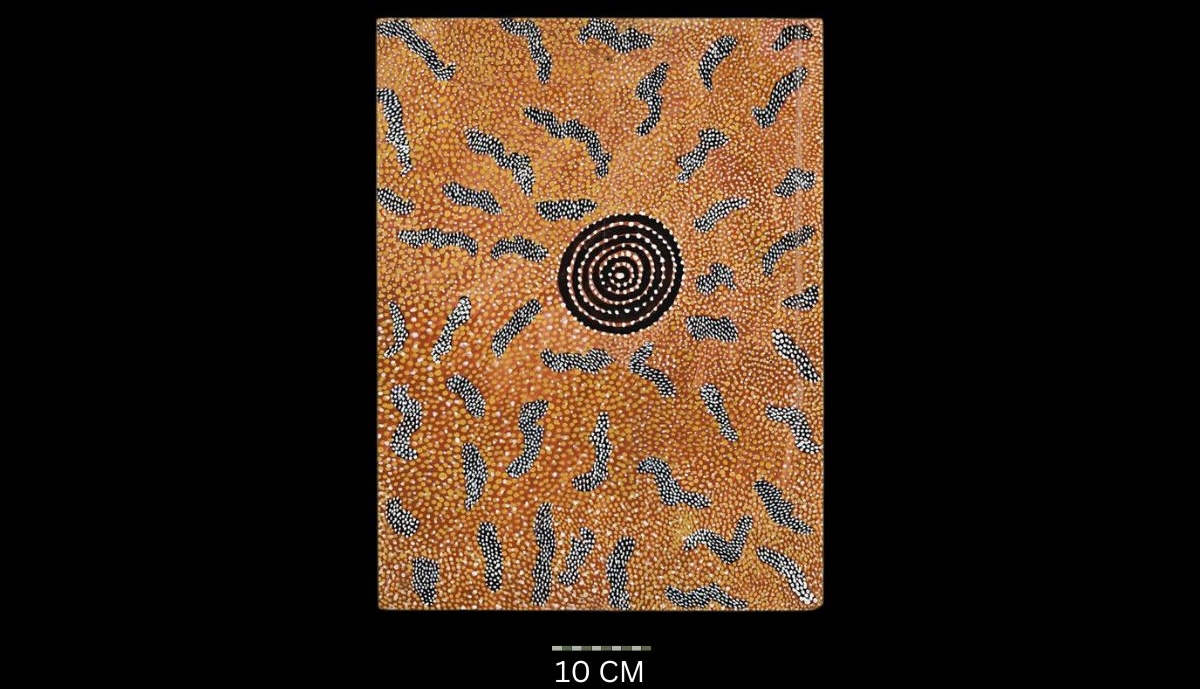
Untitled, 1973
Synthetic polymer paint on composition board,
60 x 45 cm
Hammerprice: A$10,000
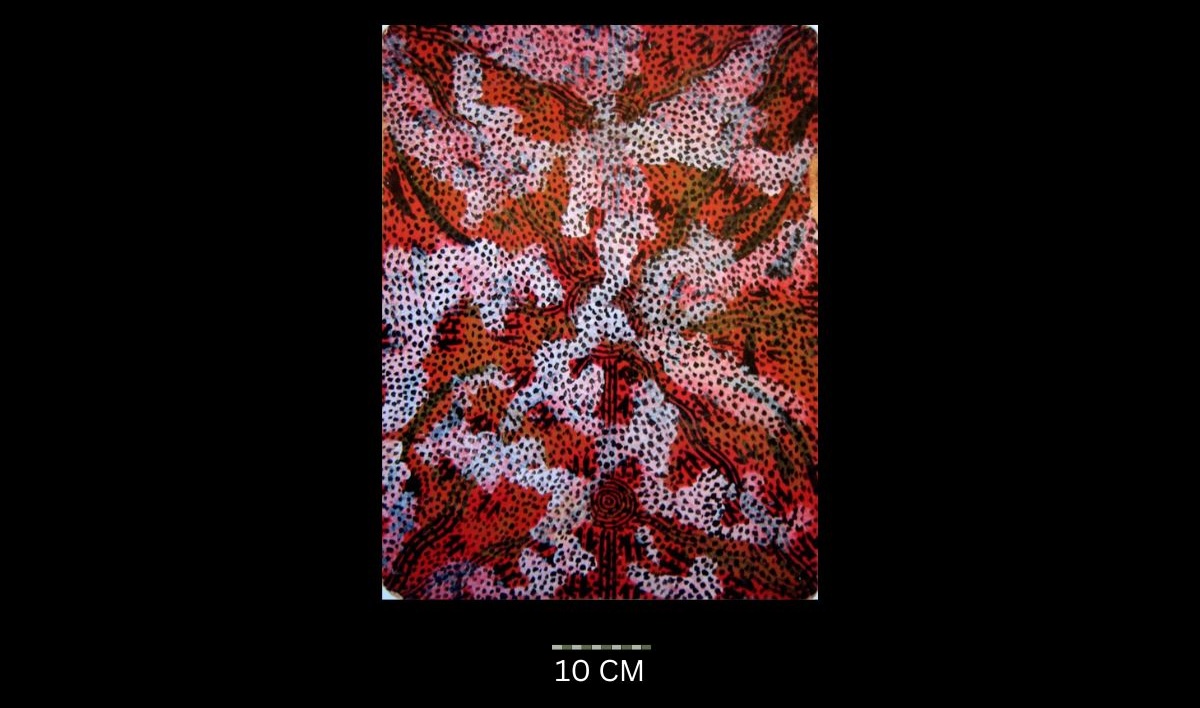
Untitled 1973
Synthetic polymer paint on canvas board, bears artist’s name and the number 12 on the reverse,
61 x 45 cm
Hammerprice: A$5,000
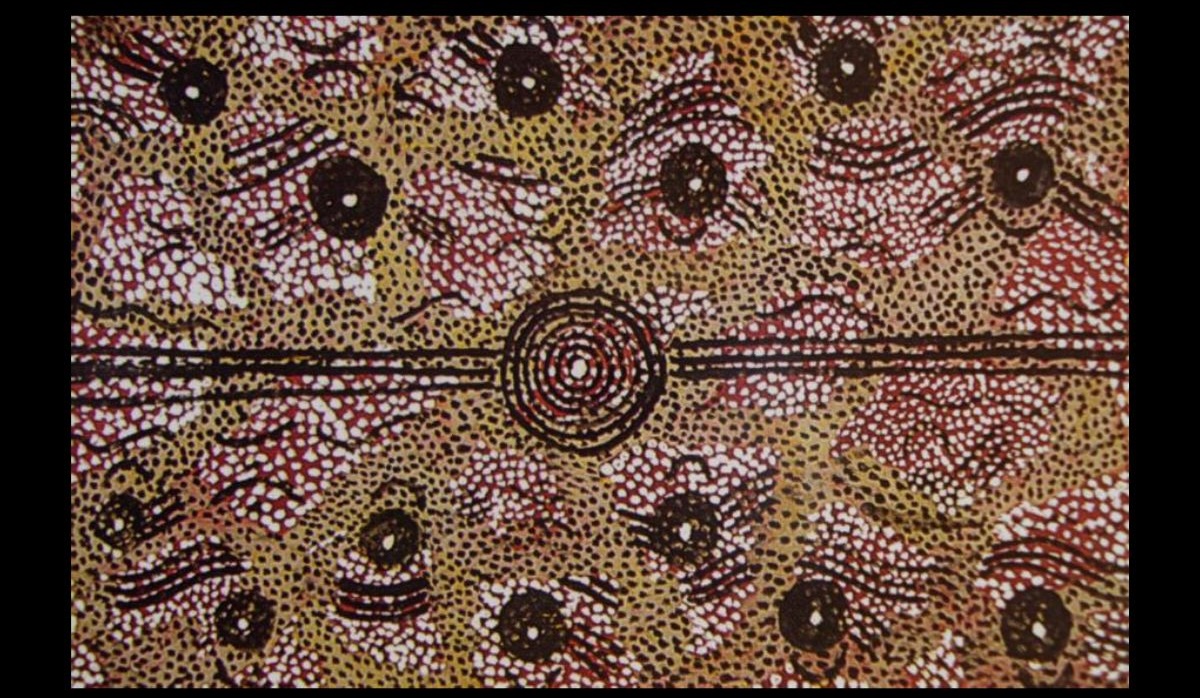
Bush Fire Dreaming, c. 1973
Synthetic polymer on board
Size not recorded
Hammerprice: A$4,750

Hunting Rock Wallaby (Waru), 1973
Synthetic polymer paint on board,
43.5 x 23 cm
Hammerprice: A$4,400
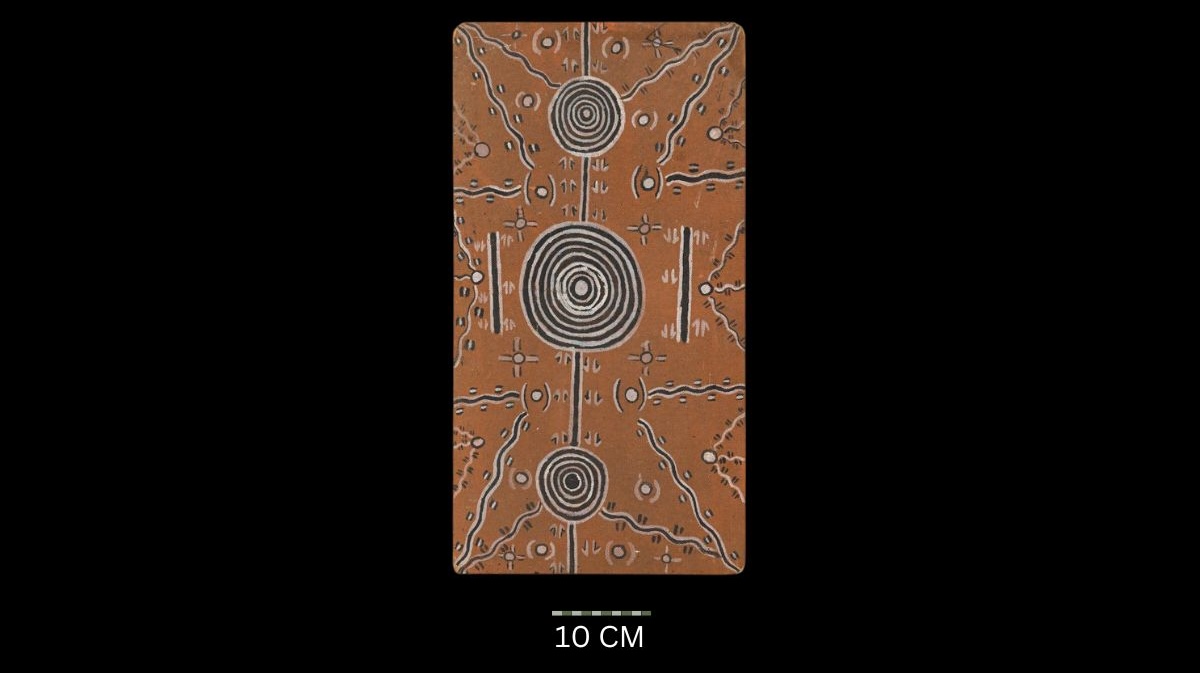
Mala (Rock Wallaby) Story, c1973
Synthetic polymer paint on composition board,
30 x 56.5 cm
UNSOLD
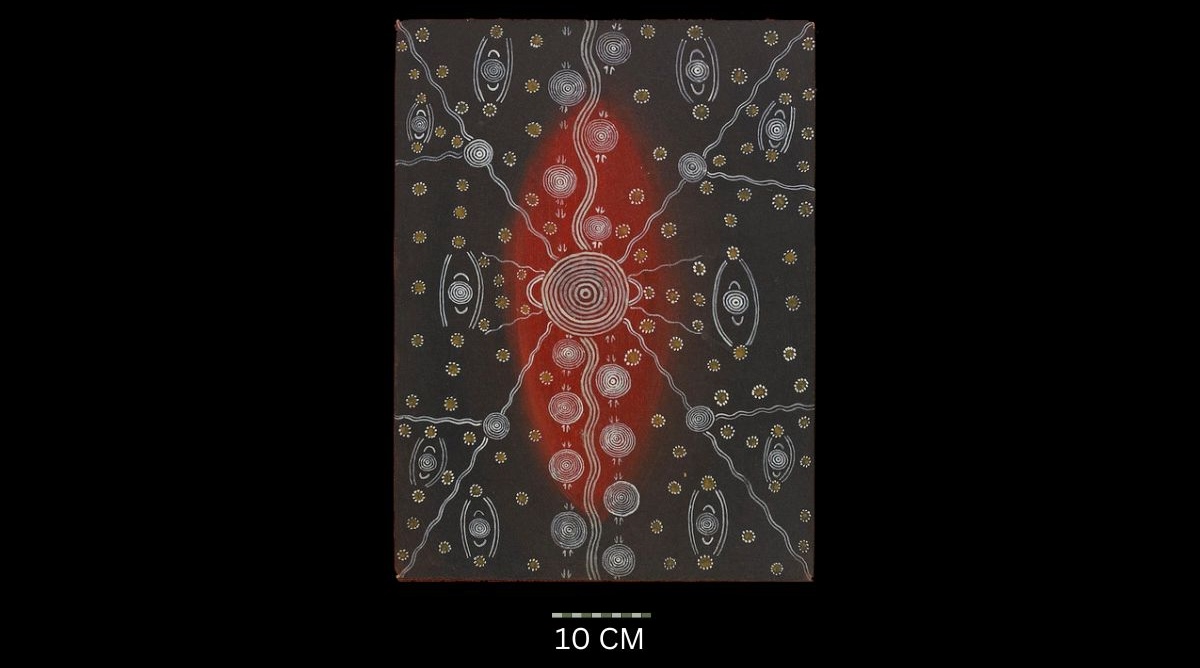
Euro Hunting, 1973
Synthetic polymer paint on composition board,
43.5 x 57.5 cm
UNSOLD
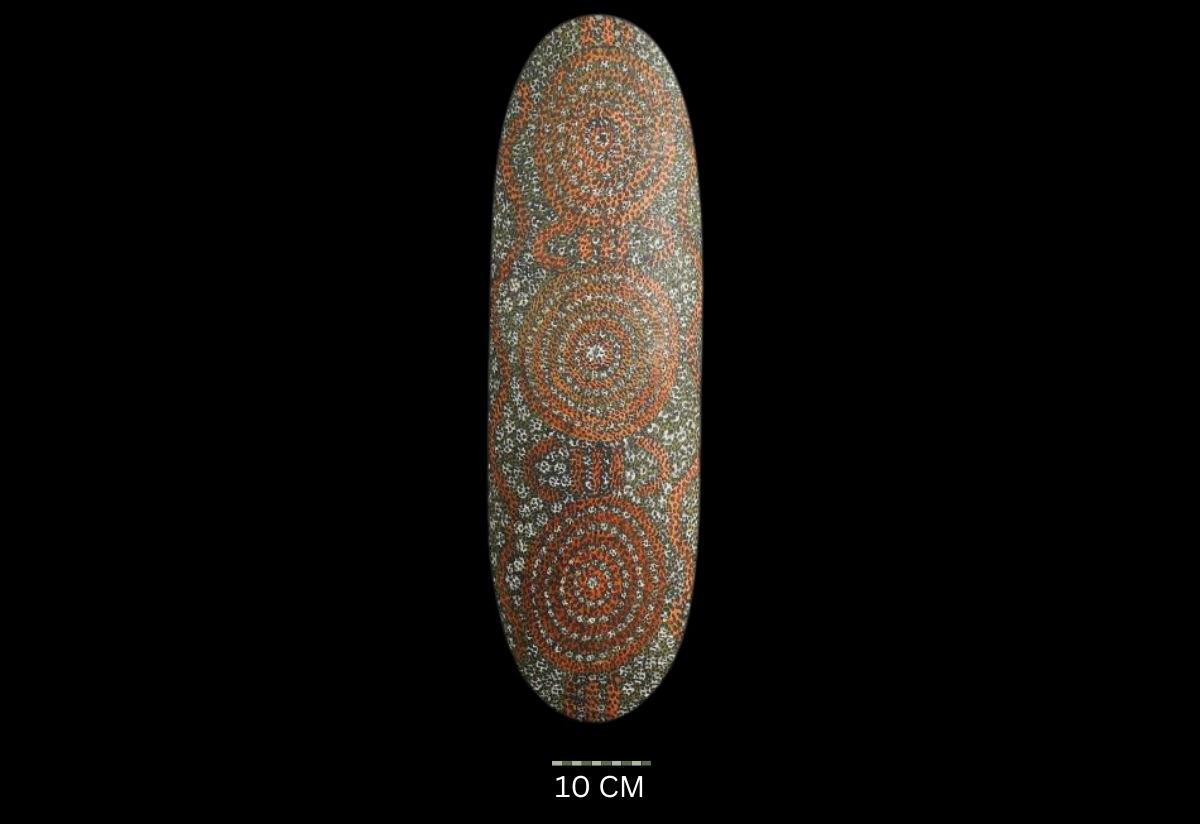
Untitled – Painted Shield 1973
Synthetic polymer powder paint on carved beanwood, length:
71 cm
Hammerprice: A$8,000
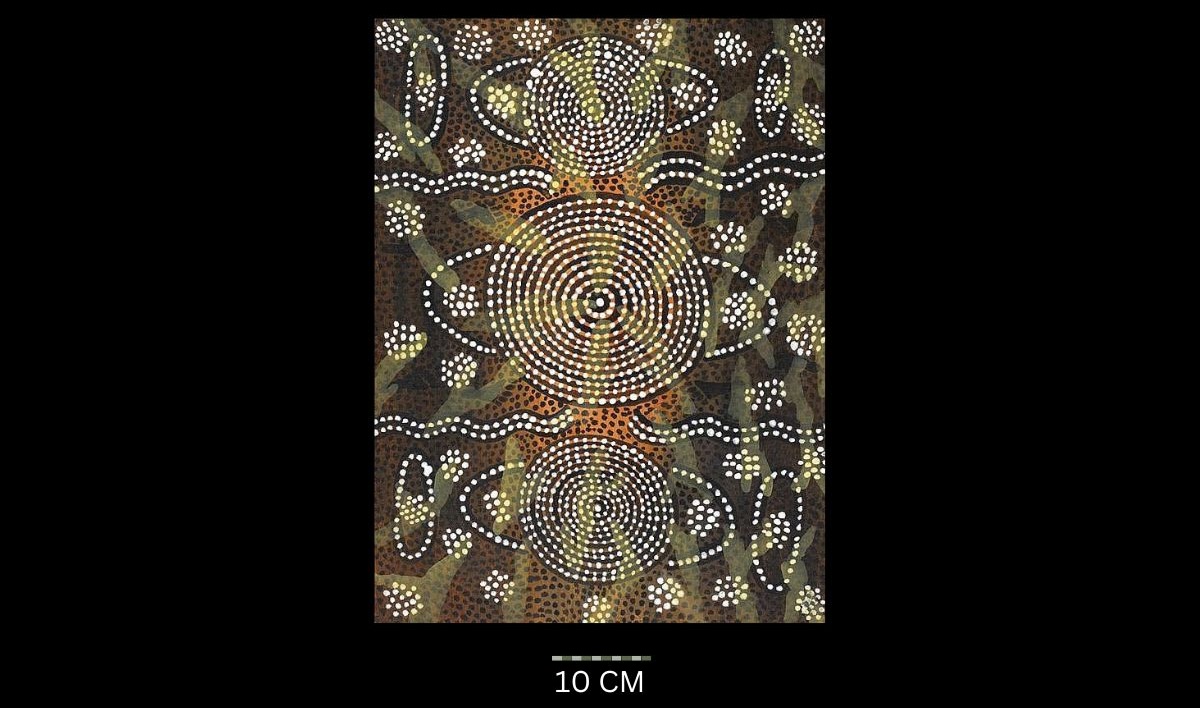
Euro Dreaming (1973)
Synthetic polymer paint on artist board,
60.5 x 45 cm
Hammerprice: A$8,000
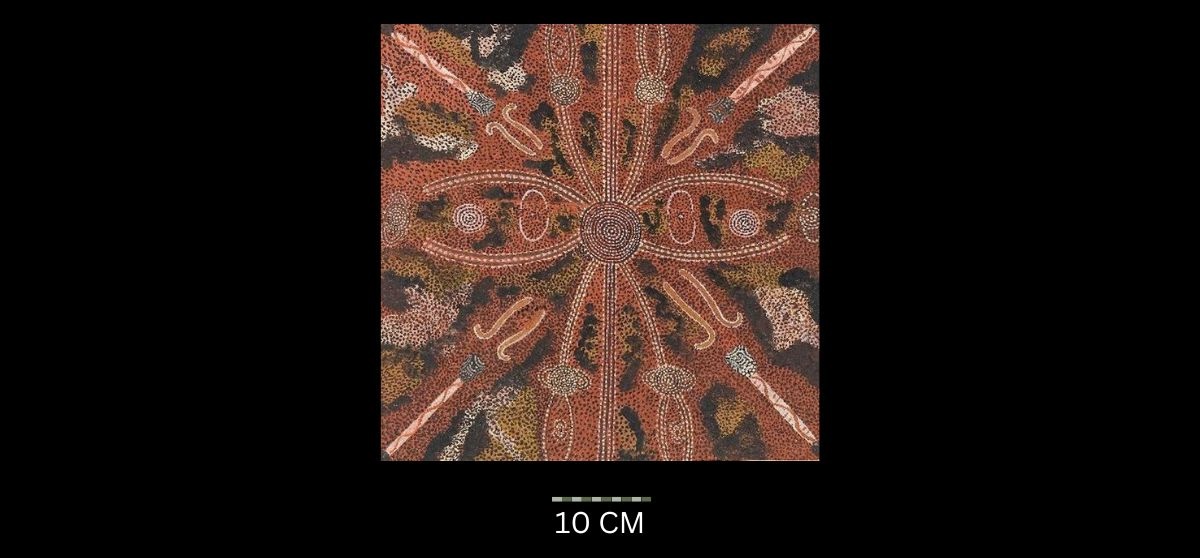
Pulapo (Ngkata) Possum, 1973
Synthetic powder paint on composition board,
43 x 43 cm
Hammerprice: A$18,000
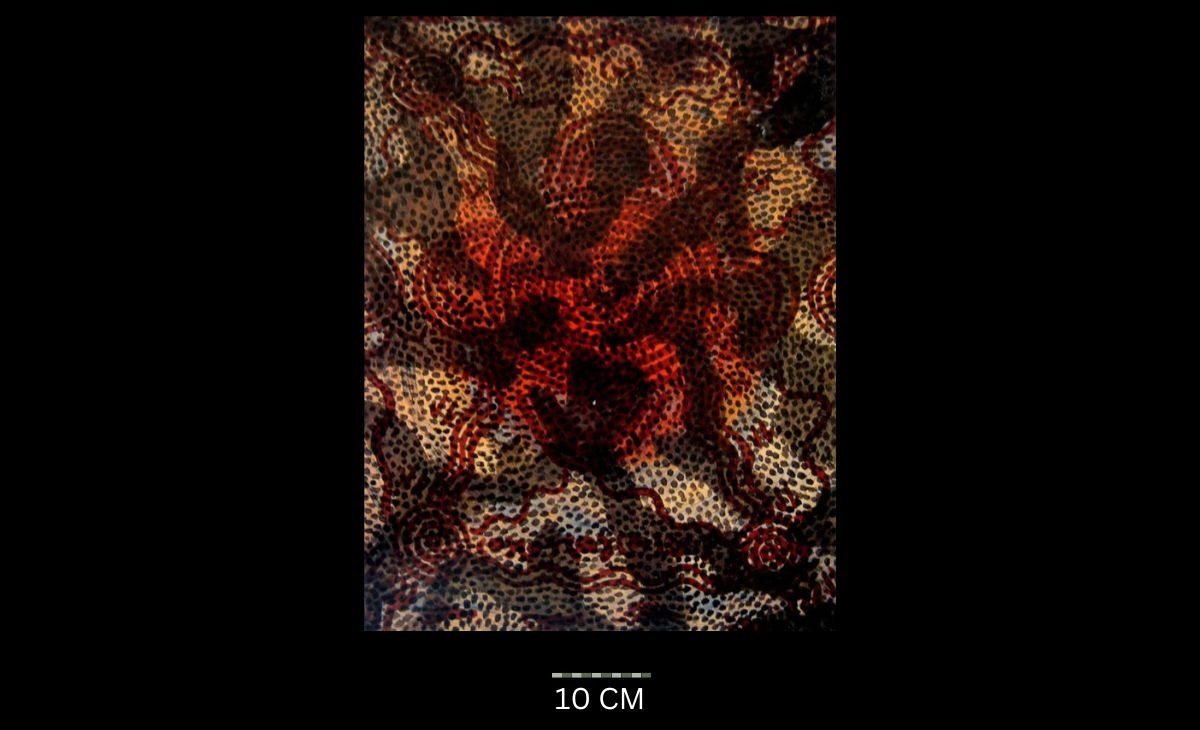
Witchetty Dreaming, Circa 1973-74
Synthetic polymer paint on canvasboard,
61 x 45 cm
Hammerprice: A$5,000

Witchetty Dreaming, Circa 1973-74
Synthetic polymer paint on canvasboard,
61 x 45 cm
Hammerprice: A$5,000
Later Works and Commercial Shift: Post-1974 Developments in Tim Leura’s Art
Following 1974, Tim Leura Tjapaltjarri continued to develop his unique visual language on canvas board, further expanding his use of colour while adapting to the growing commercial interest in Aboriginal art. His works from this period display greater variation in quality, with many appearing to be created to meet increased market demand. Technically, his compositions became less intricate, employing fewer but larger dots and reducing the labour-intensive detail that characterised his earlier masterpieces. This simplification, while commercially viable, marked a notable shift in artistic focus. However, in 1977, Leura introduced a powerful new visual motif—the skeletal figure—in works such as Alpalyparranjka. These haunting, symbolic forms represented a return to deeper cultural narratives and would directly influence his most iconic painting, Spirit Dreaming through Napperby Country. This monumental piece not only cemented his legacy within the Aboriginal art movement but also demonstrated the enduring spiritual and ceremonial foundations at the heart of his evolving practice. Keywords: Tim Leura Tjapaltjarri, Papunya Tula artists, Western Desert art, Aboriginal dot painting, Dreaming stories, composite board, canvas board, Indigenous iconography, skeletal figures, Spirit Dreaming, colour evolution in Aboriginal art, cultural protection, Aboriginal visual language.
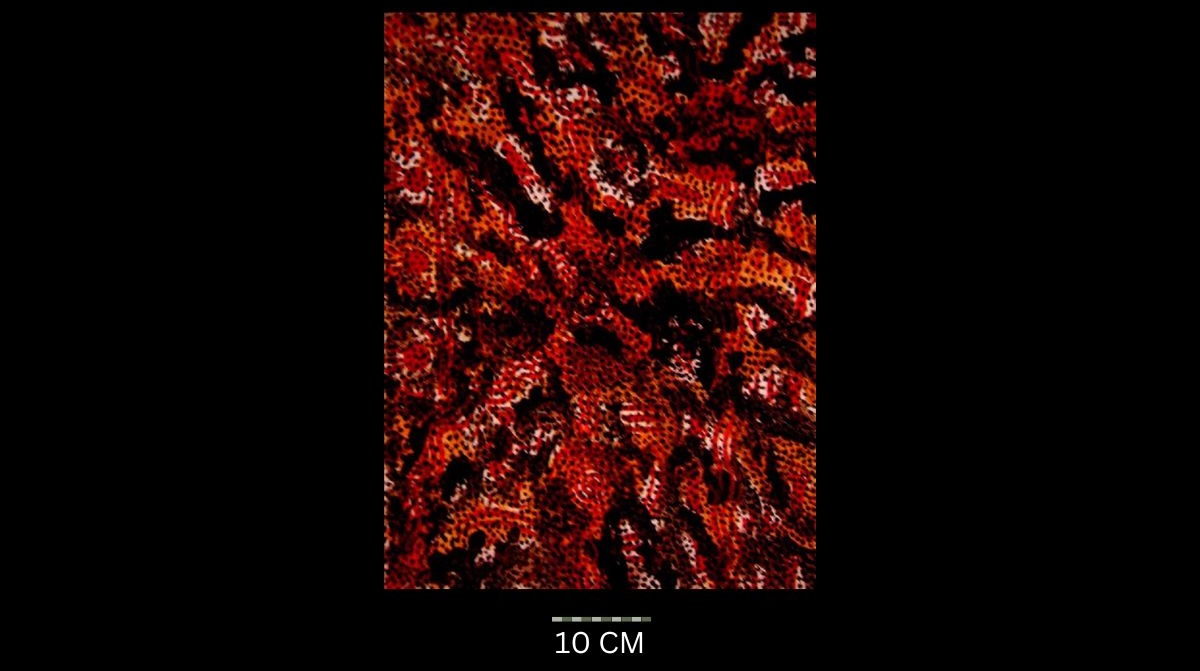
Bushfire at Warlukurlong c. 1974
Synthetic polymer paint on board, inscribed verso: Tim Leura/ Bushfire At Yuendumu,
57 x 43 cm
Hammerprice: A$1,500
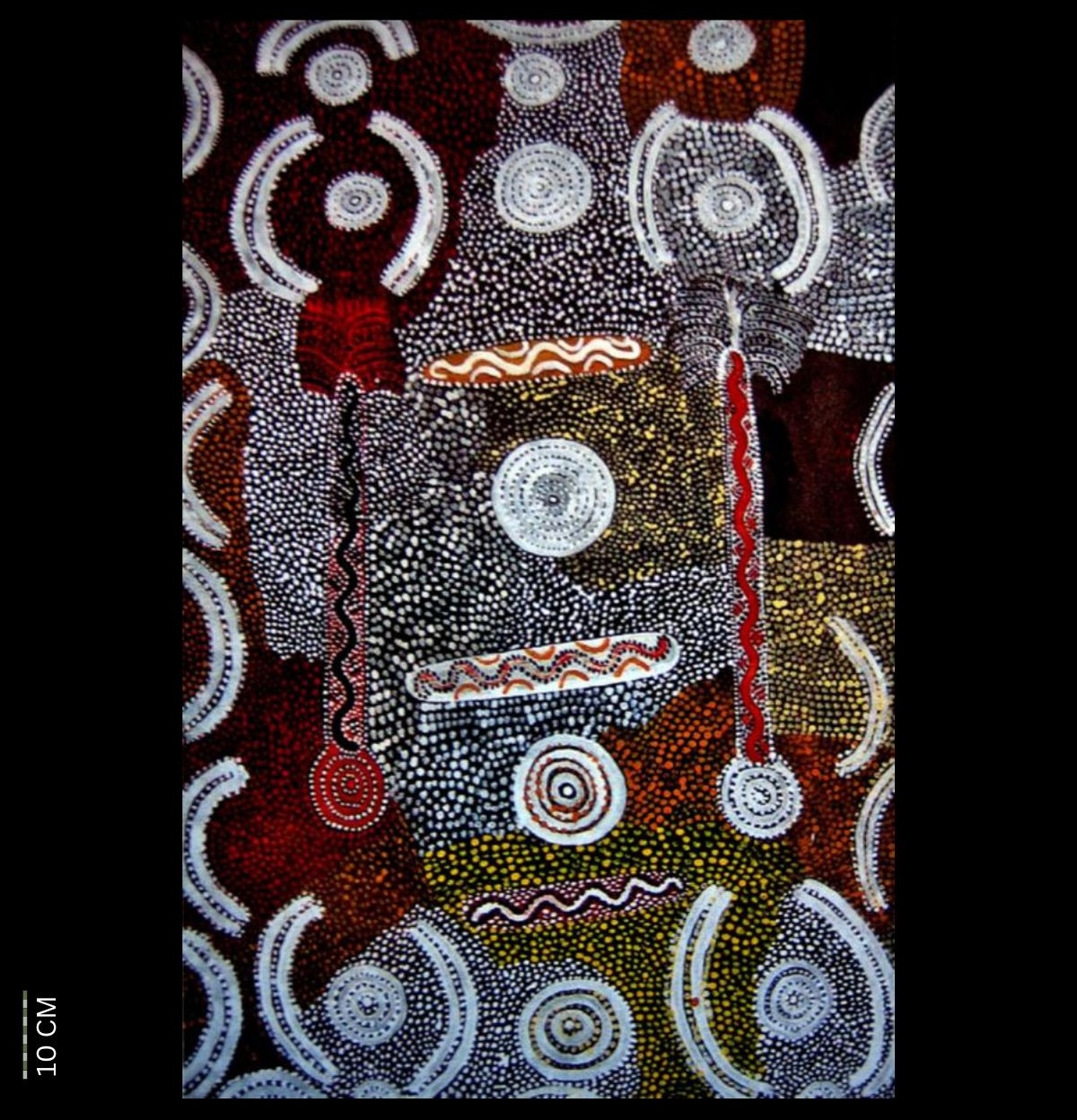
Untitled Corroboree Poles c. 1974
Synthetic polymer paint on canvas,
120 x 76.5 cm
Hammerprice: A$12,000
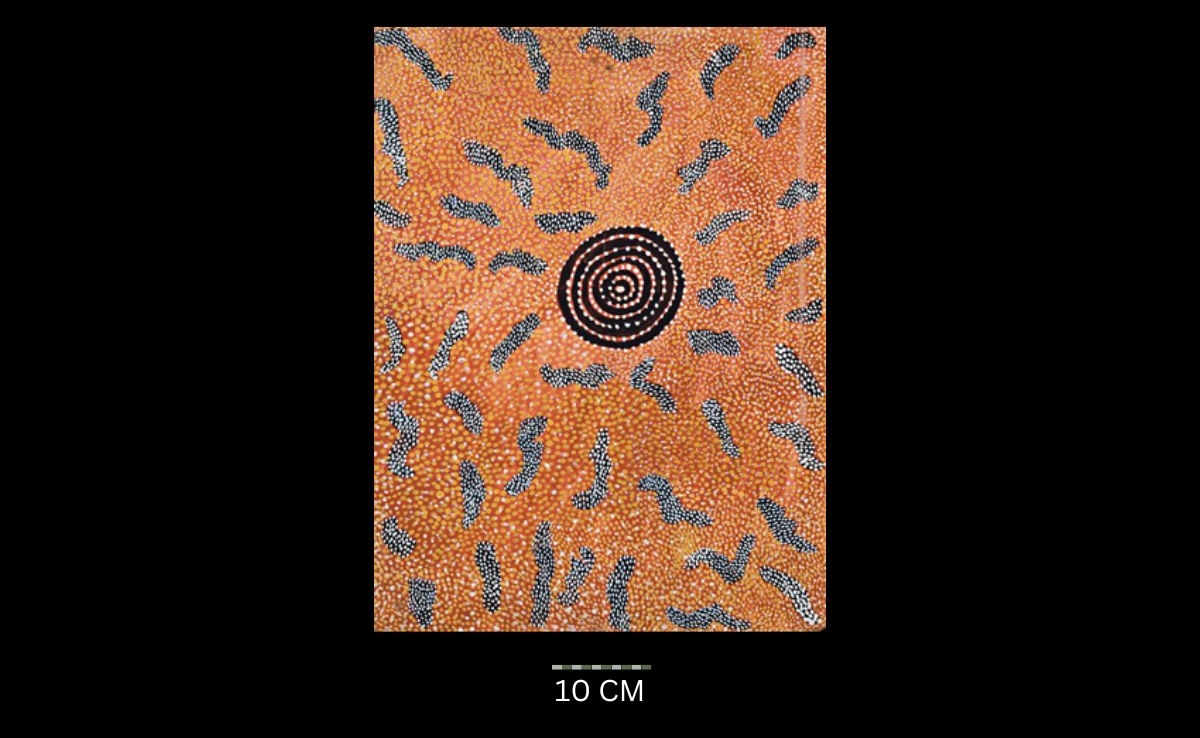
Untitled, 1974
Synthetic polymer paint on composition board,
60 x 45 cm
Hammerprice: A$9,000
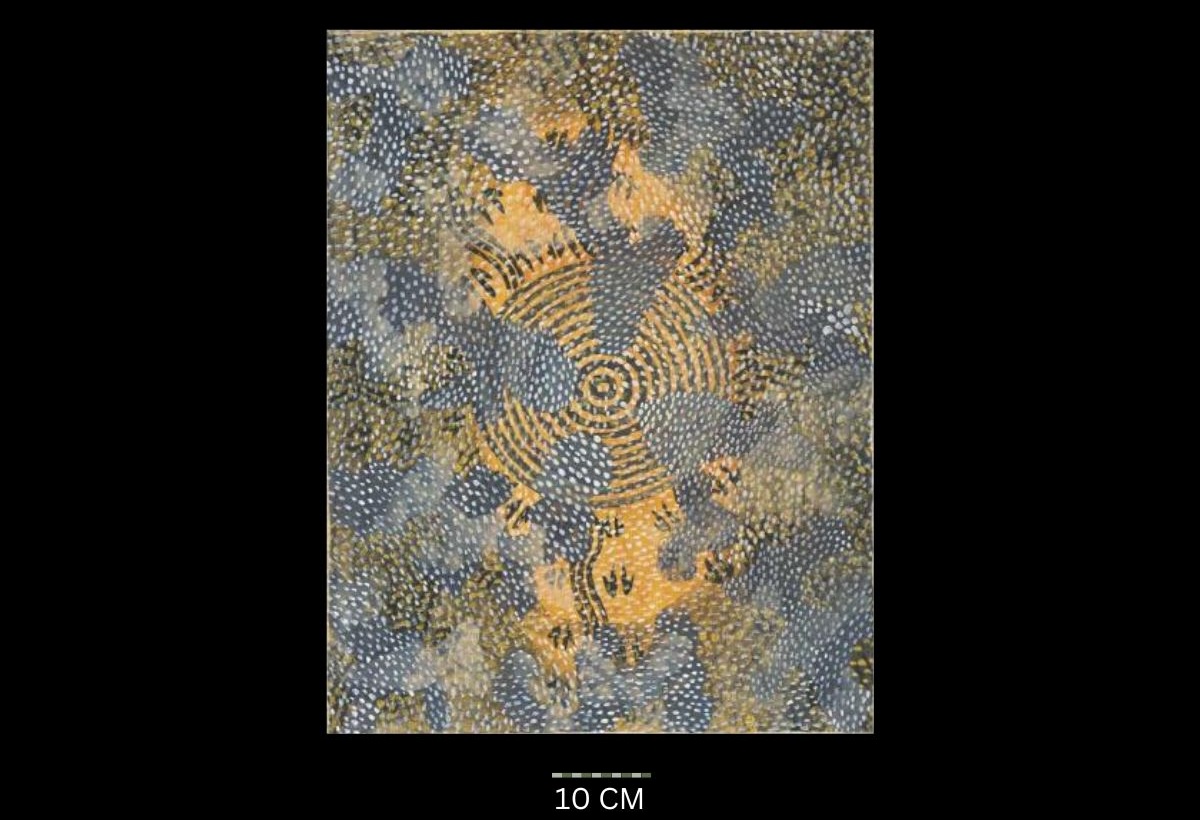
Untitled Bushfire Story c. 1974
Synthetic polymer paint on canvas board,
71 x 55.5 cm
Hammerprice: A$11,000
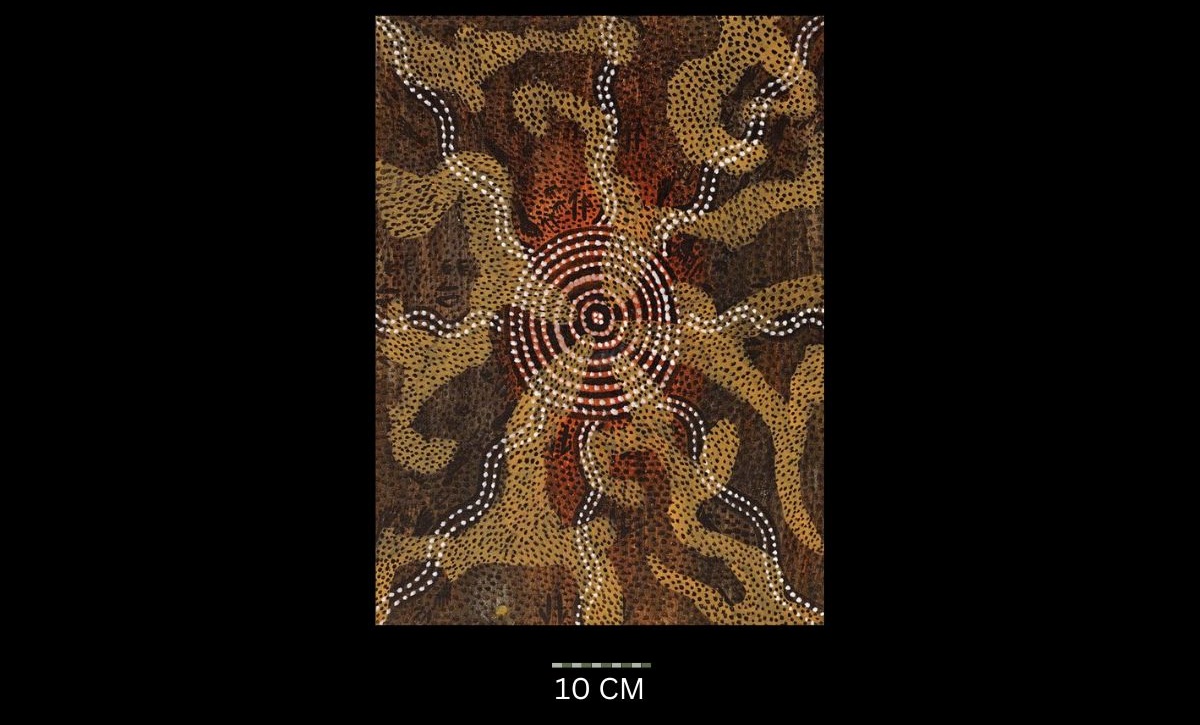
Euro Dreaming (Circa 1973-1974)
Synthetic polymer paint on composition board,
61 x 45.5 cm
Hammerprice: A$12,000
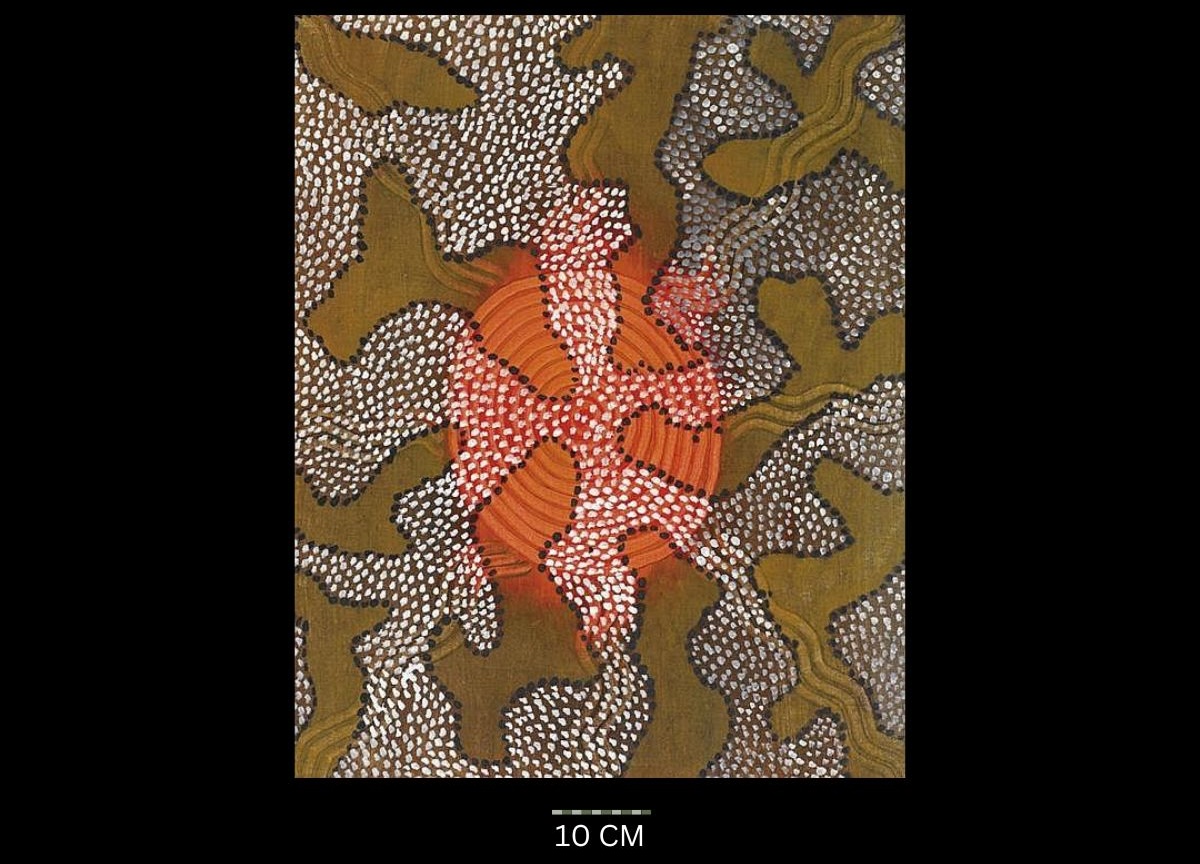
Centre Circle of Fire (1974)
Synthetic polymer paint on artist board,
76.5 x 60.5 cm
Hammerprice: A$12,000
Tim Leura Tjapaltjarri Artworks 1975
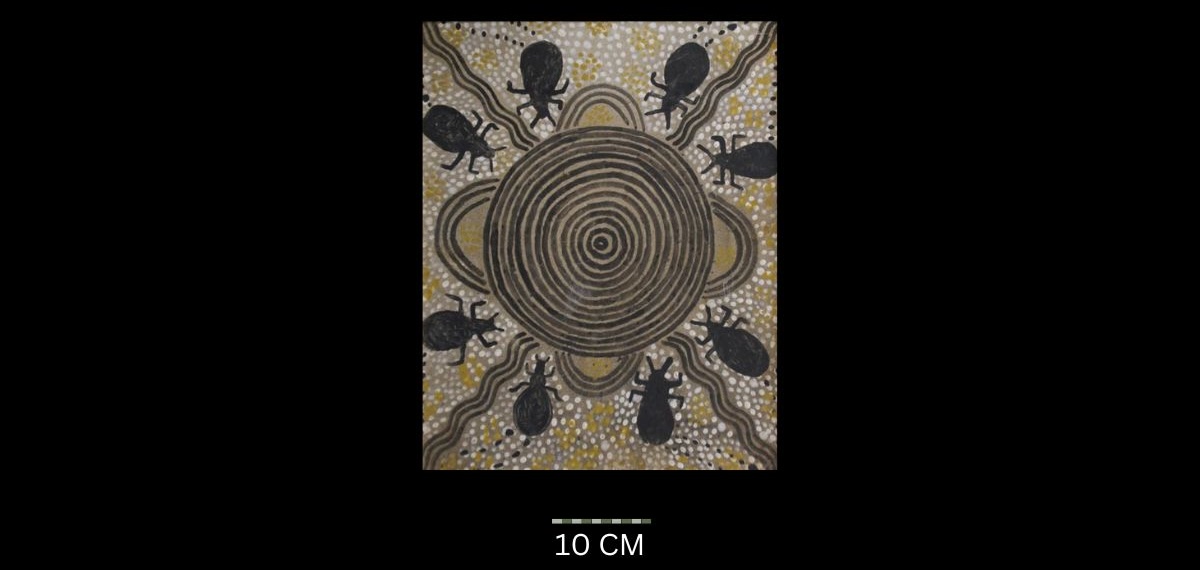
Papunya Tula 1975
Acrylic on card, signed by Janet Wilson on verso,
29 x 35 cm
Hammerprice: A$2,300
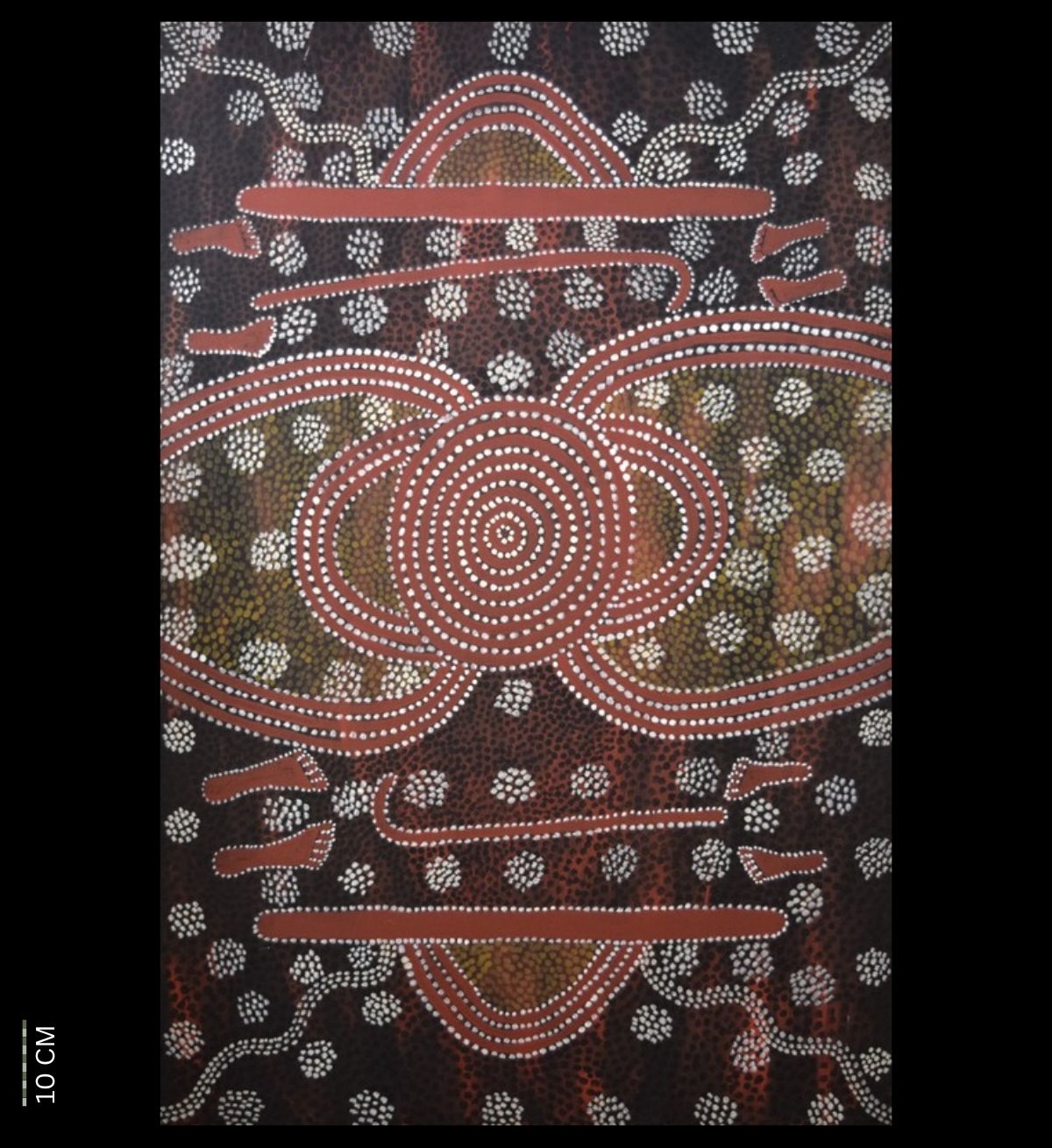
Women’s Love Magic 1975
Synthetic polymer paint on canvas,
126 x 83 cm
Hammerprice: A$9,500
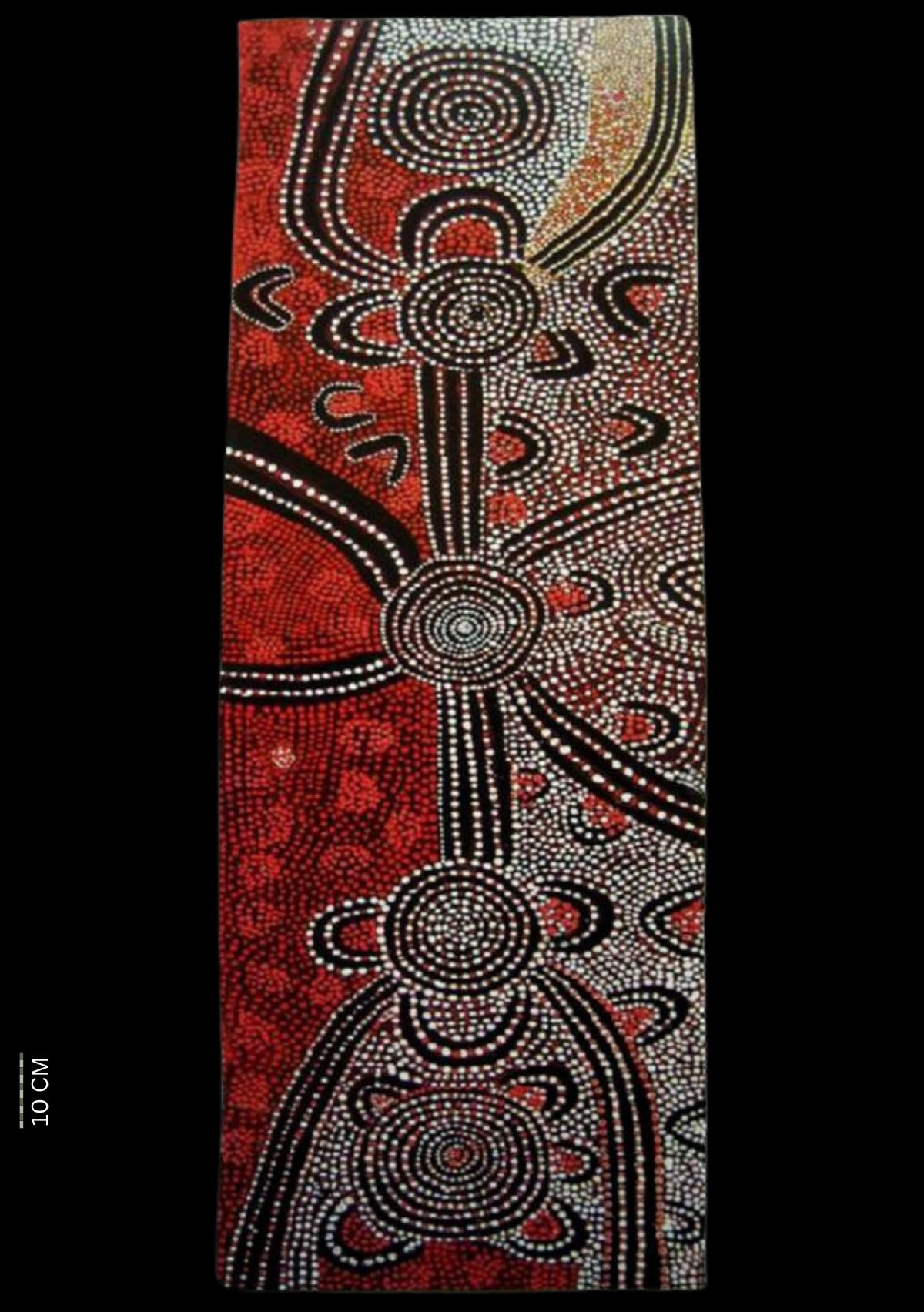
Single Girls’ Camp 1975
Synthetic polymer paint on canvas,
167 x 49 cm
Hammerprice: A$8,000

Honey Ant Dreaming 1976
Acrylic on canvas, papunya Tula Artists stock number ‘TL 11631′ and the unidentified stock number ’49 K31’ inscribed verso,
124.5 x 78.5 cm
Hammerprice: A$5,000
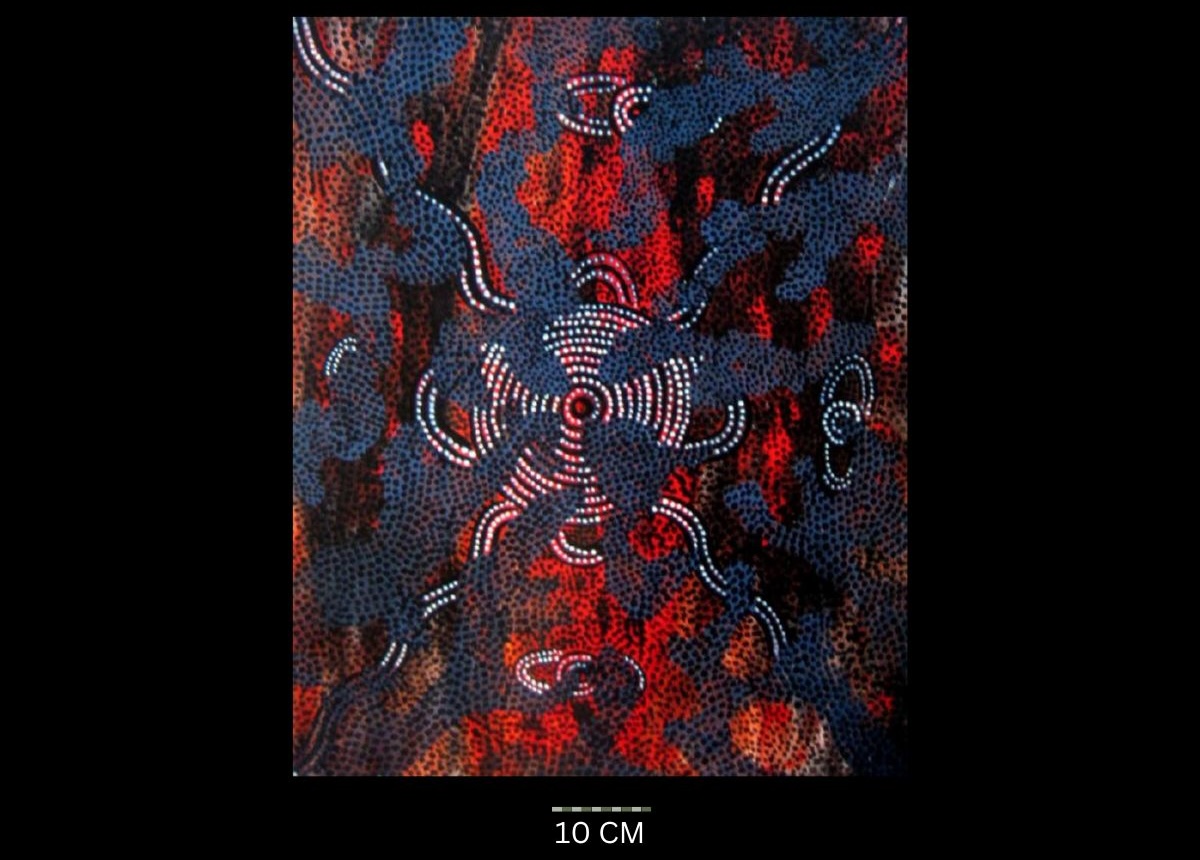
Bushfire Dreaming 1976
Synthetic polymer paint on board, inscribed verso Tim Leura,
61 x 76 cm
Hammerprice: A$6,500
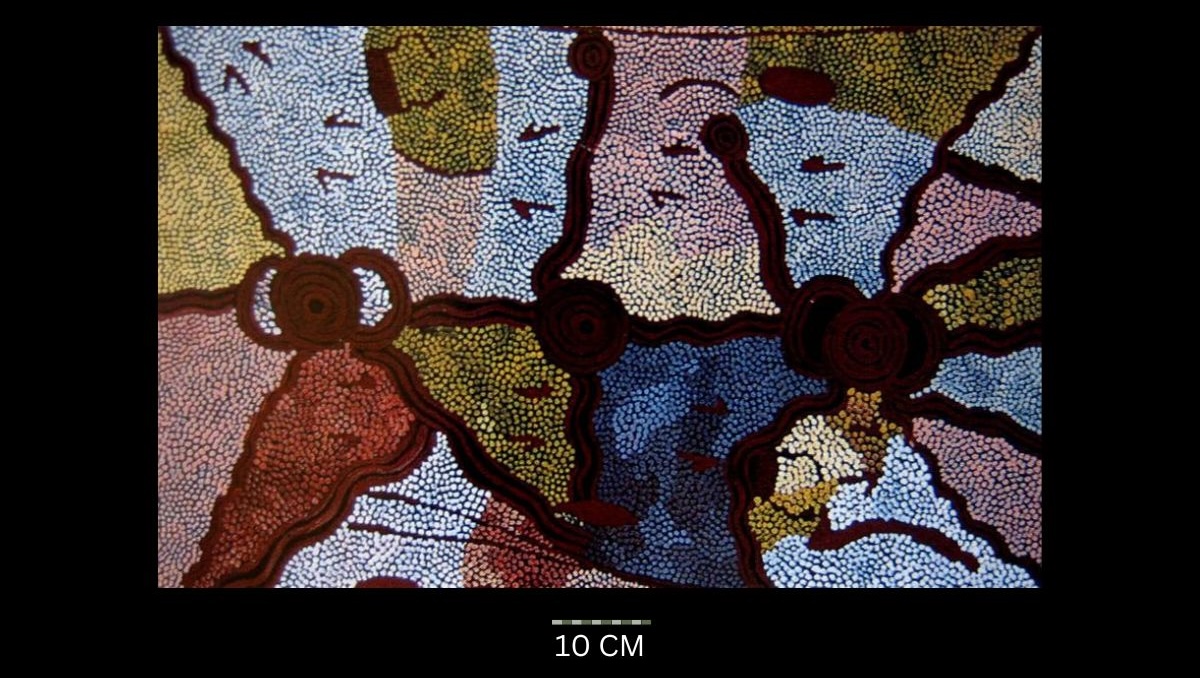
Possum Ancestor Dreaming, c. 1976
Synthetic polymer paint on canvas, bears artist’s name on the reverse,
88 x 56 cm
Hammerprice: A$2,600
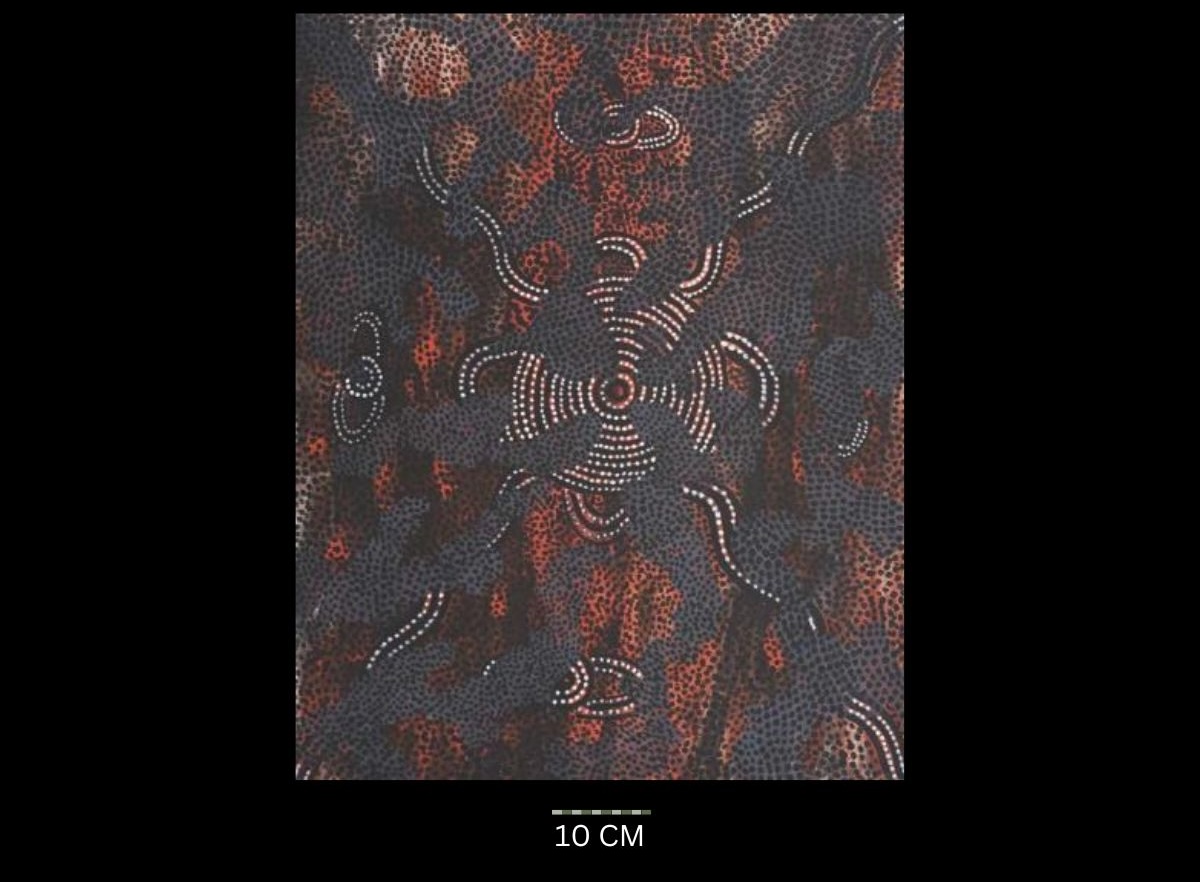
Bushfire Dreaming 1976
Synthetic polymer paint on canvas board, bears artist’s name on the reverse,
61 x 76 cm
Hammerprice: A$7,500
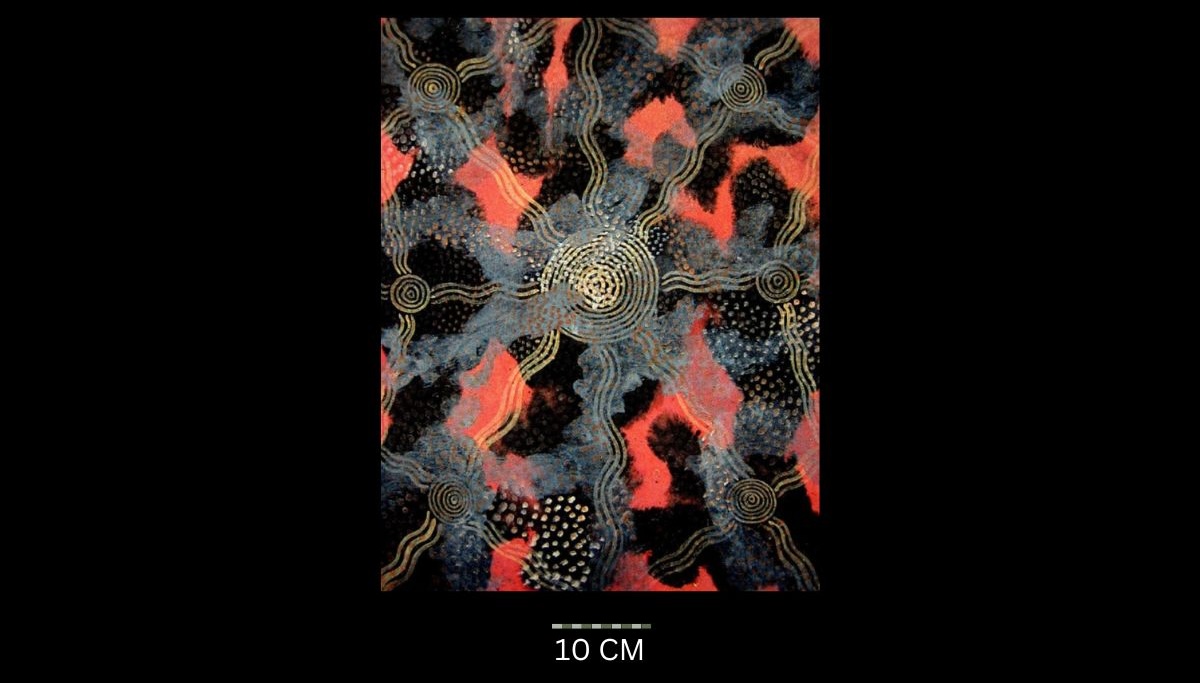
Bushfires at Night c. 1976
Synthetic polymer paint on board, bears signed artist’s name and title on the reverse,
57 x 43 cm
Hammerprice: A$8,000
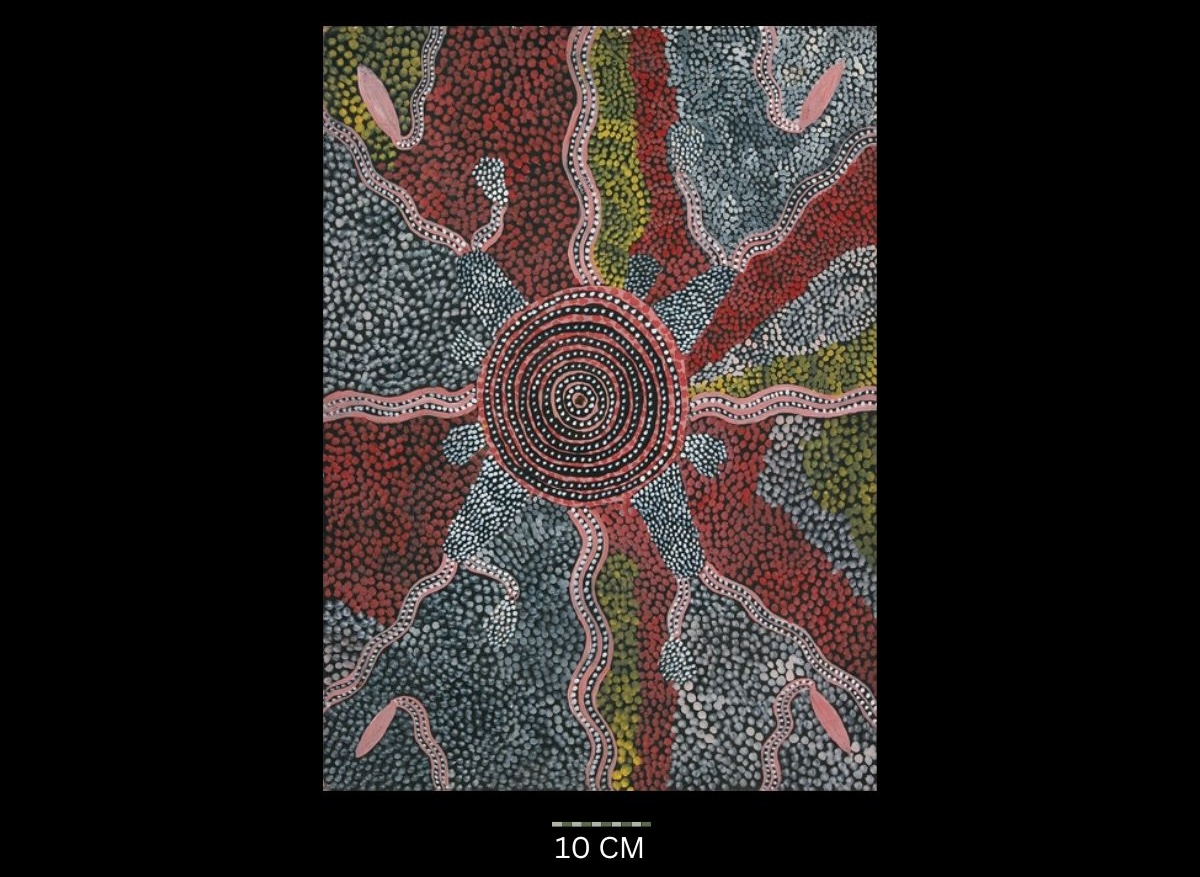
Yala (Sweet Potato) at Napperby 1976
Acrylic on canvas,
76 x 55.5 cm
Hammerprice: A$8,500
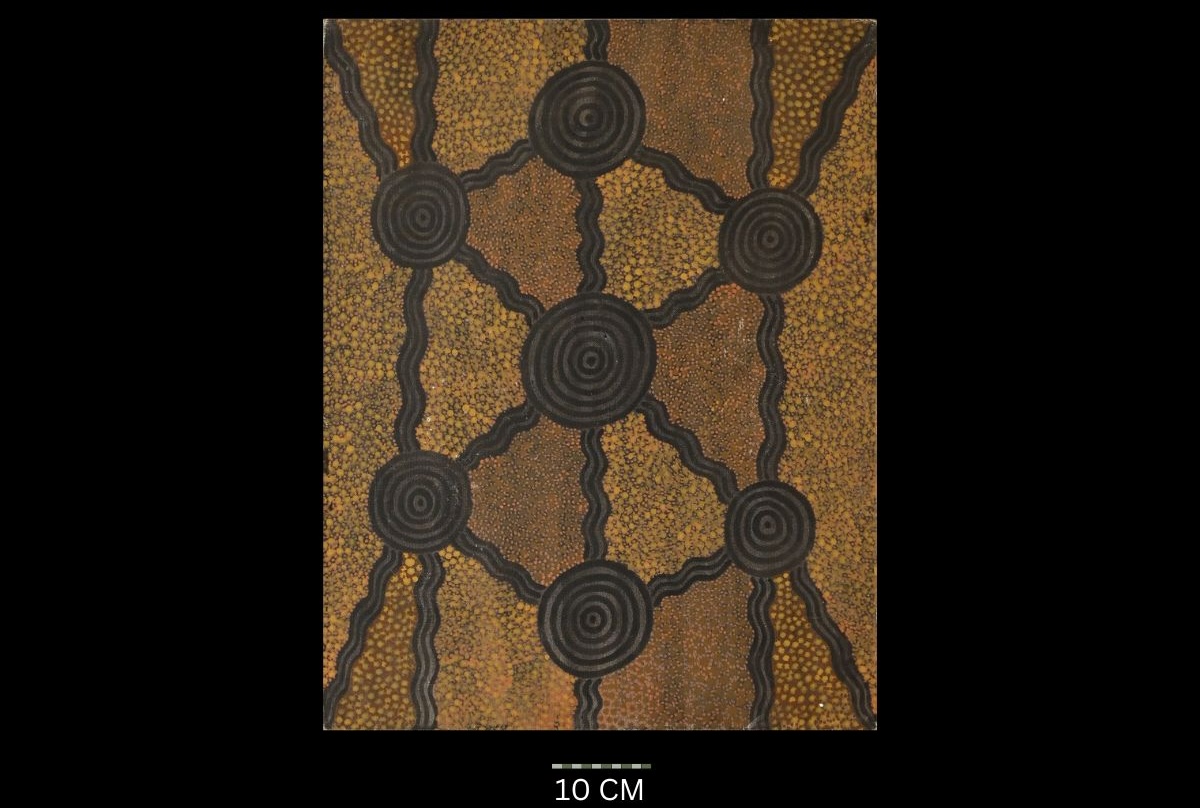
Lalradjingya Big Rocky Hill Possum & Woman Corroboree, 1977
Synthetic polymer paint on canvas board, accompanied by a certificate of authenticity from Western Desert Aboriginal Art,
71 x 56 cm
Hammerprice: A$9,500
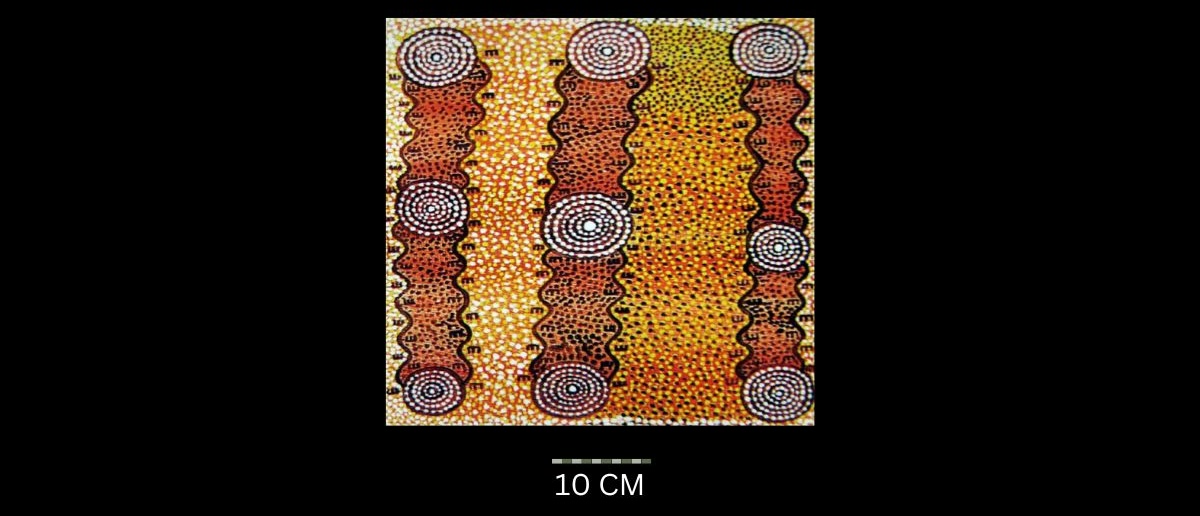
Possum Dreaming 1977
Synthetic polymer paint on canvas board, signed by the artist, and inscribed with date and title on the reverse,
51 x 40.5 cm
Hammerprice: A$1,800
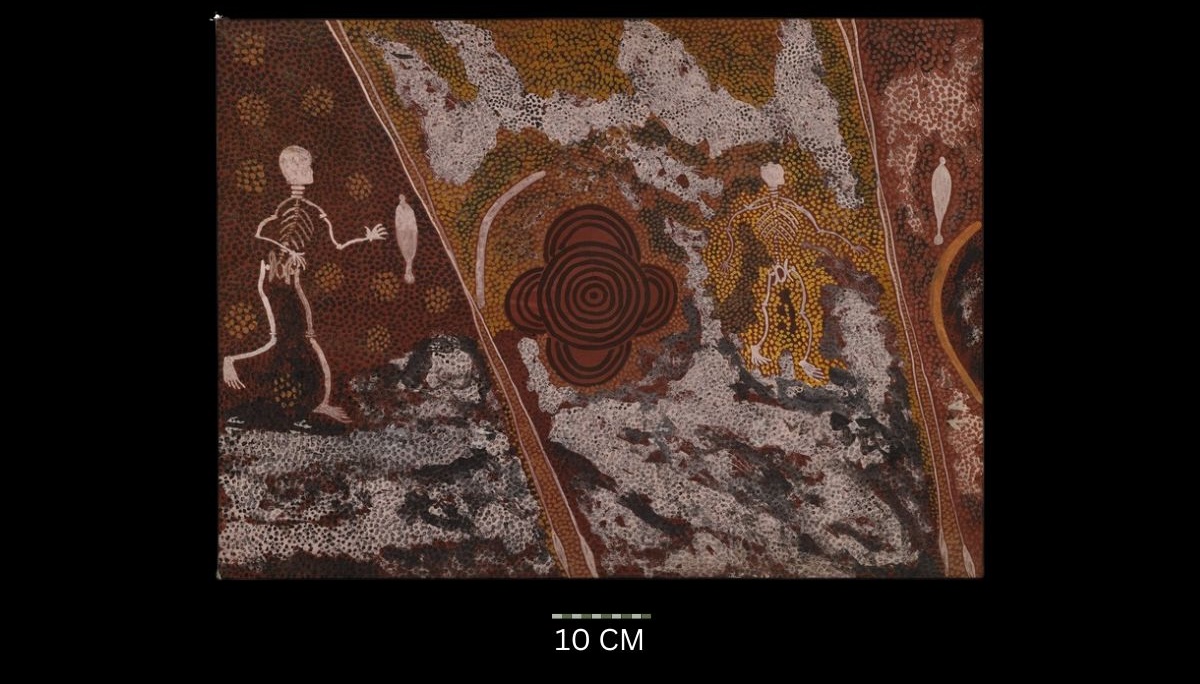
Alpalyparranjka 1977
Synthetic polymer paint on canvas board, bears artist’s name and the title on reverse,
56 x 76 cm
Hammerprice: A$18,000
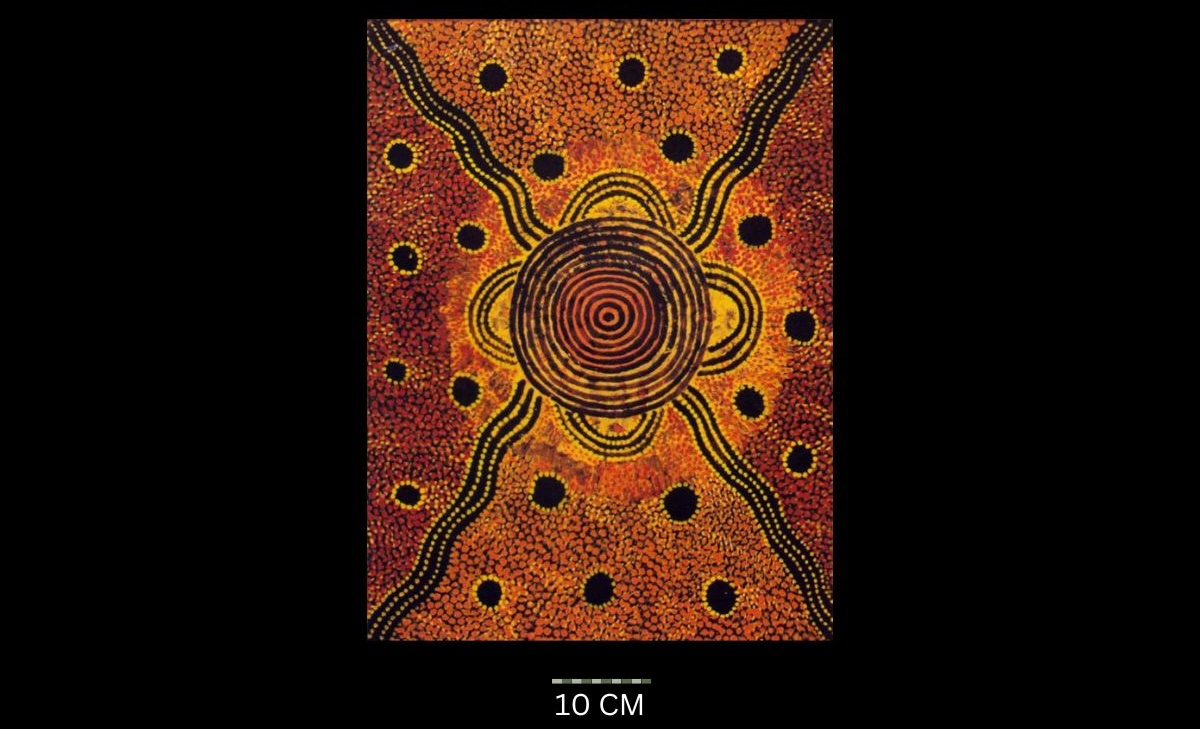
Bush Fire Dreaming c. 1977
Synthetic polymer paint on composition board, bears artist’s name and place of execution on the reverse of frame,
62 x 47 cm
Hammerprice: A$4,000
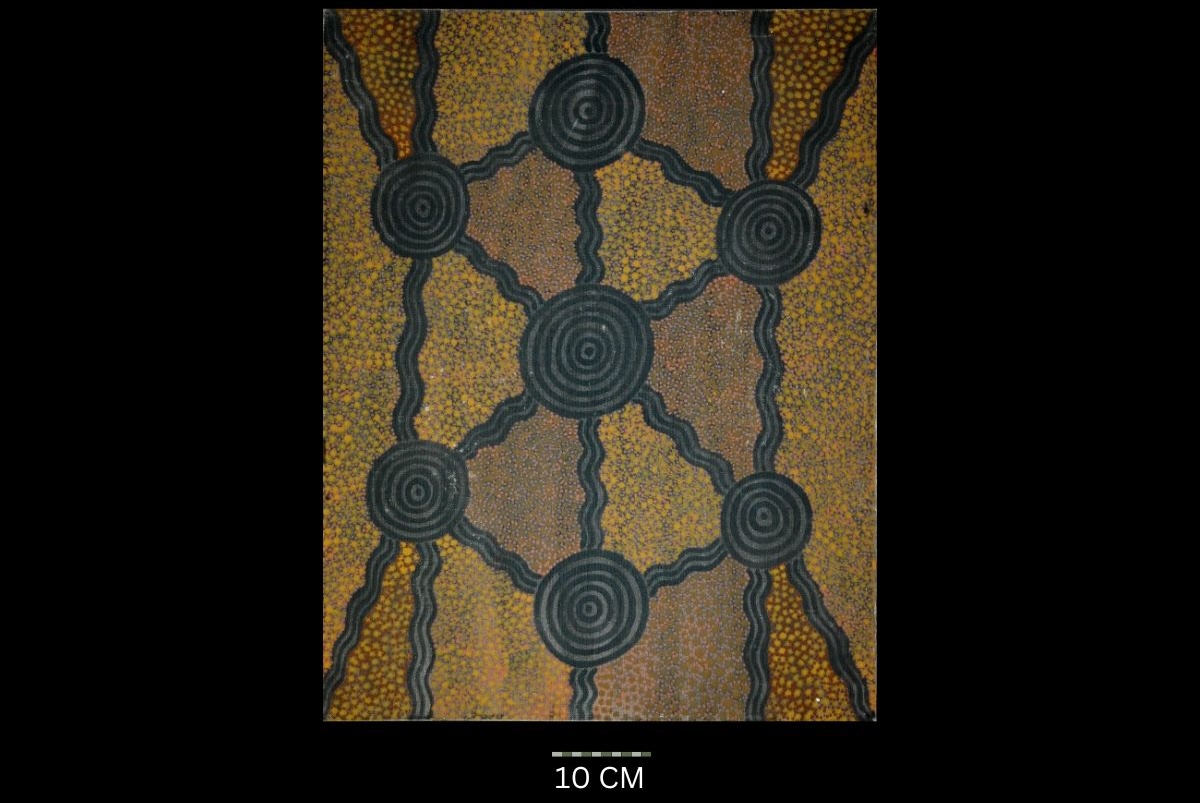
‘Lalradjingyp Big Rocky Hill Possum & Woman Corroboree’ 1977
Acrylic on canvas board,
71 x 56 cm
Hammerprice: A$1.800
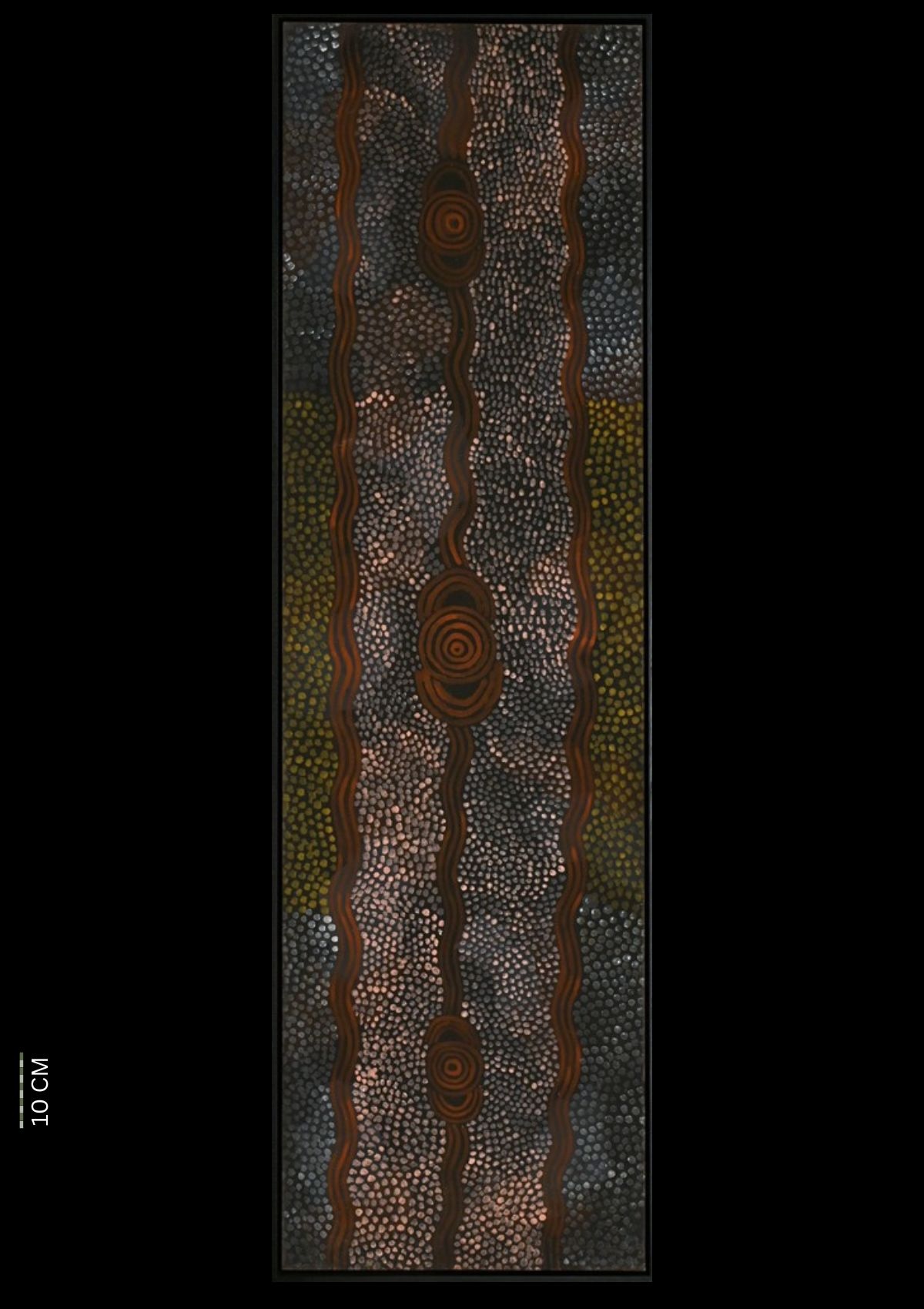
Rock Wallaby Dreaming at Karlal-Kintja, 1977
Acrylic on canvas, accompanied by a certificate of authenticity from Papunya Tula Artists,
164 x 47.5 cm
Hammerprice: A$10,000
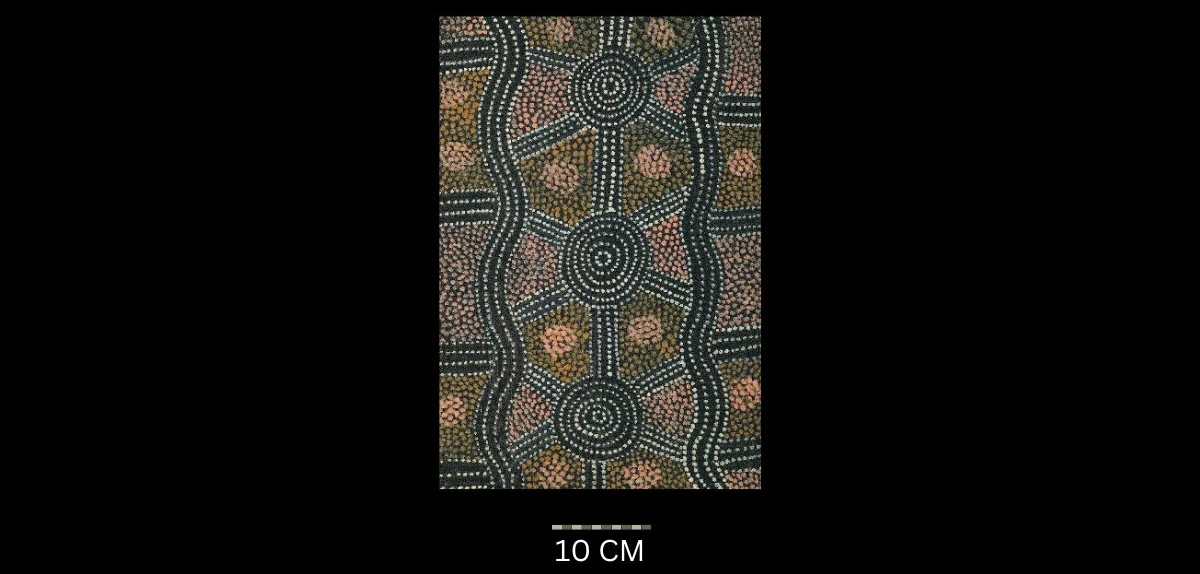
Women’s Camp at Allukurru 1978
Synthetic polymer paint on board, papunya Tula Artists certificate of authenticity attached verso,
30.5 x 47 cm
Hammerprice: A$4,000
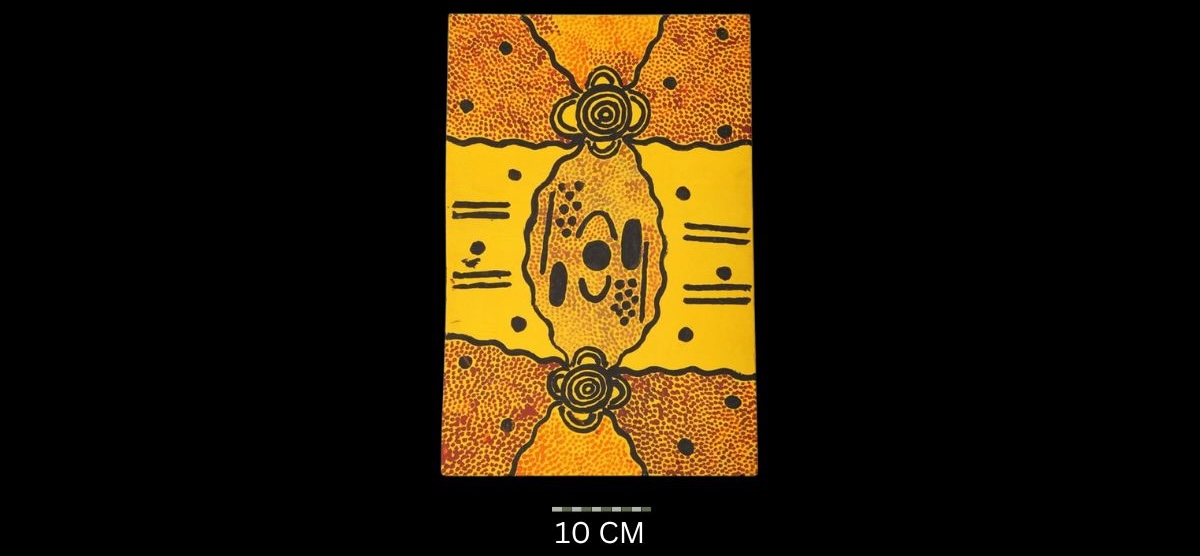
Bush Tucker Dreaming for Women and Girls 1978
Synthetic polymer paint on composition board,
30 x 46.5 cm
Hammerprice: A$4,500
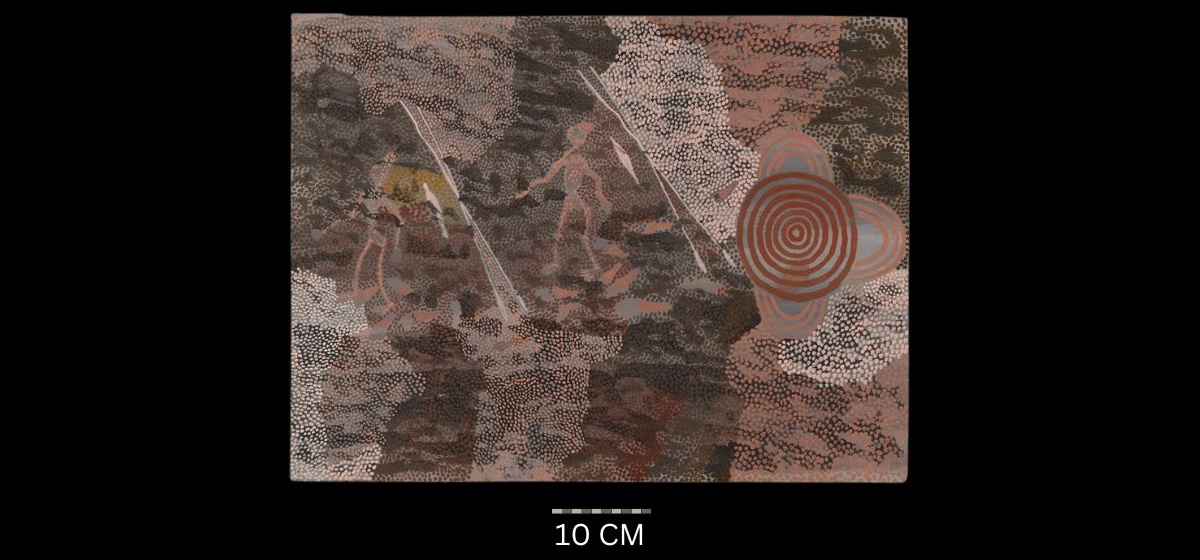
Father/Son/Grandfather Dreaming 1978
Synthetic polymer powder paint on composition board,
47.5 x 62.5 cm
Hammerprice: A$26,000
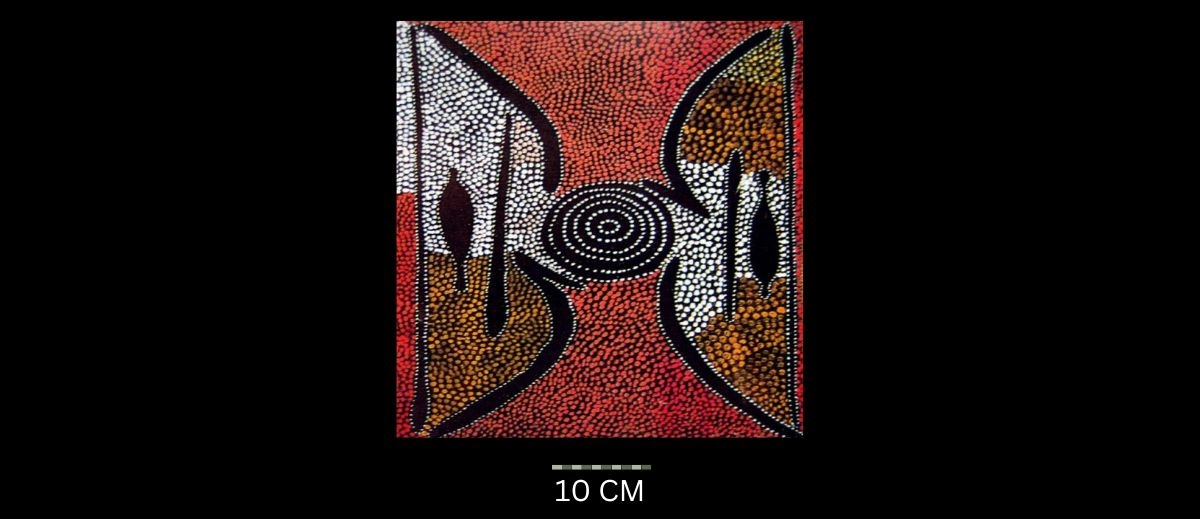
Untitled 1978
Synthetic polymer paint on canvas board, bears artist’s name and date on the reverse,
61 x 45.5 cm
Hammerprice: A$2,600
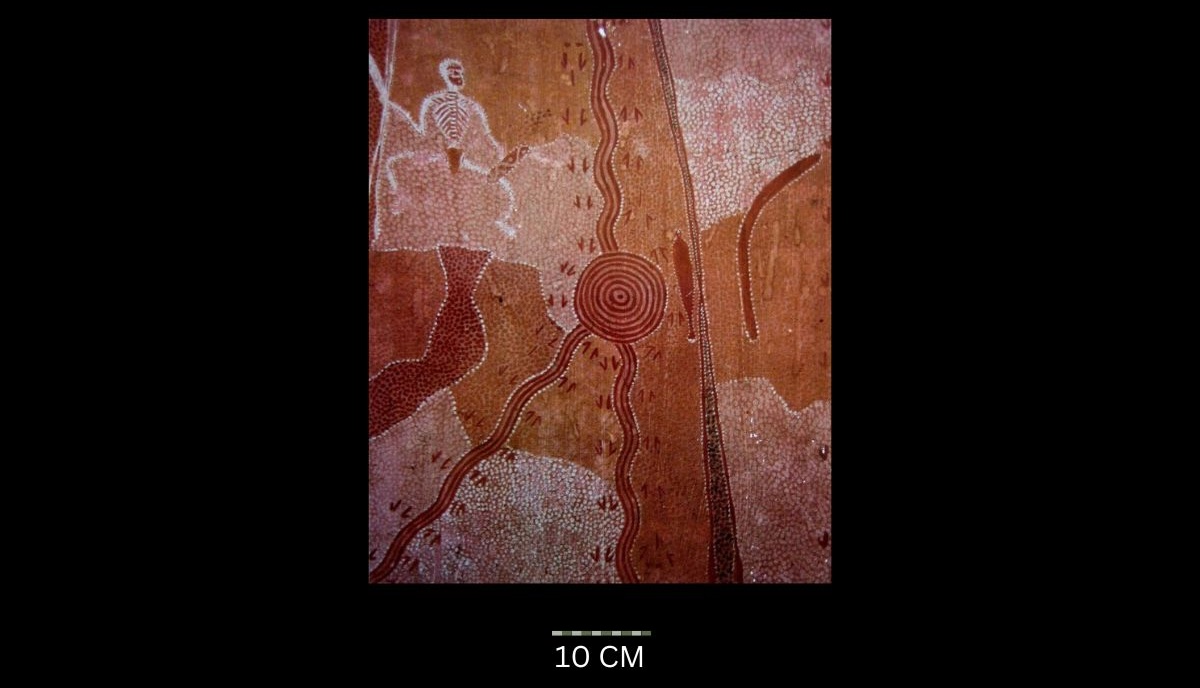
Untitled, Death Spirit Dreaming c. 1979
Synthetic polymer paint on canvas board,
56 x 45.5 cm
Hammerprice: A$7,000
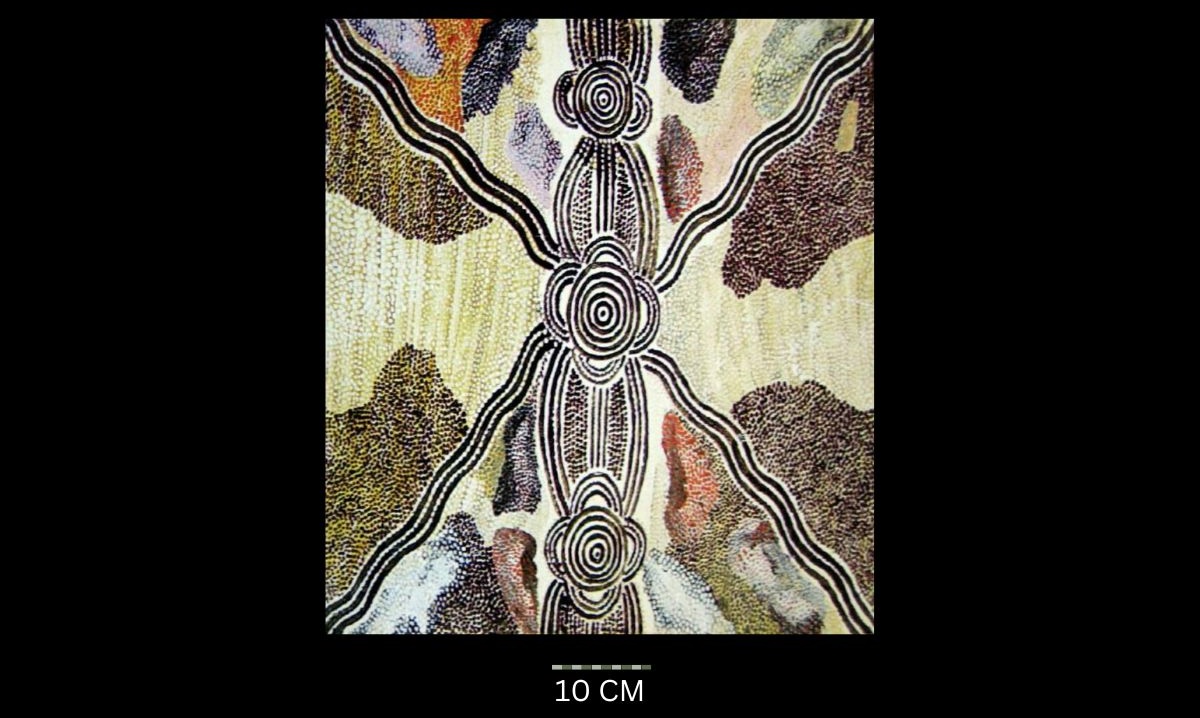
Untitled Late 1970’s
Synthetic polymer paint on canvas, bears artist’s name on the reverse,
61 x 51 cm
Hammerprice: A$4,000
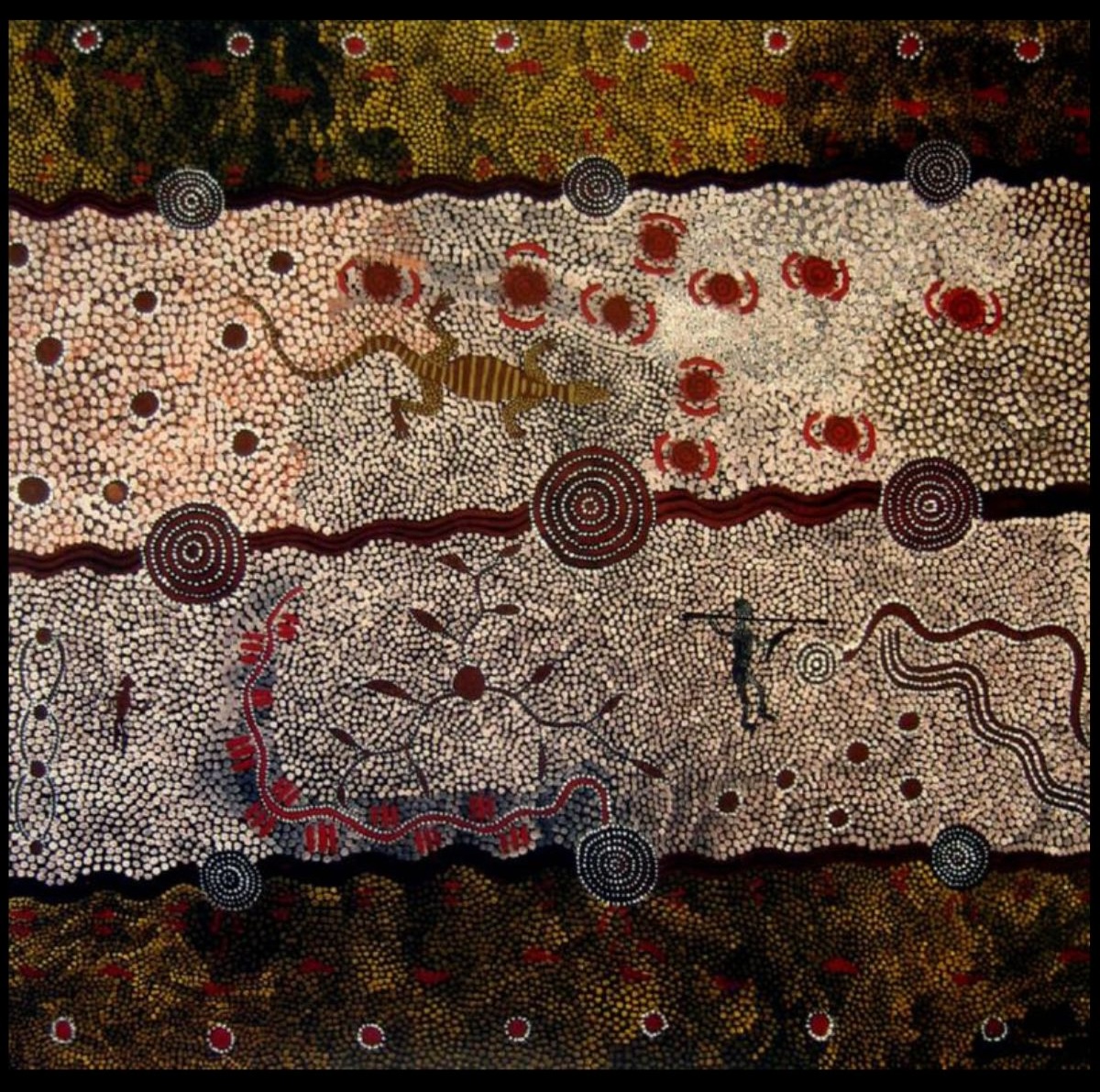
Untitled (Feeding the Children) 1979
Synthetic polymer paint on linen,
151 x 155 cm
Hammerprice: A$59,000
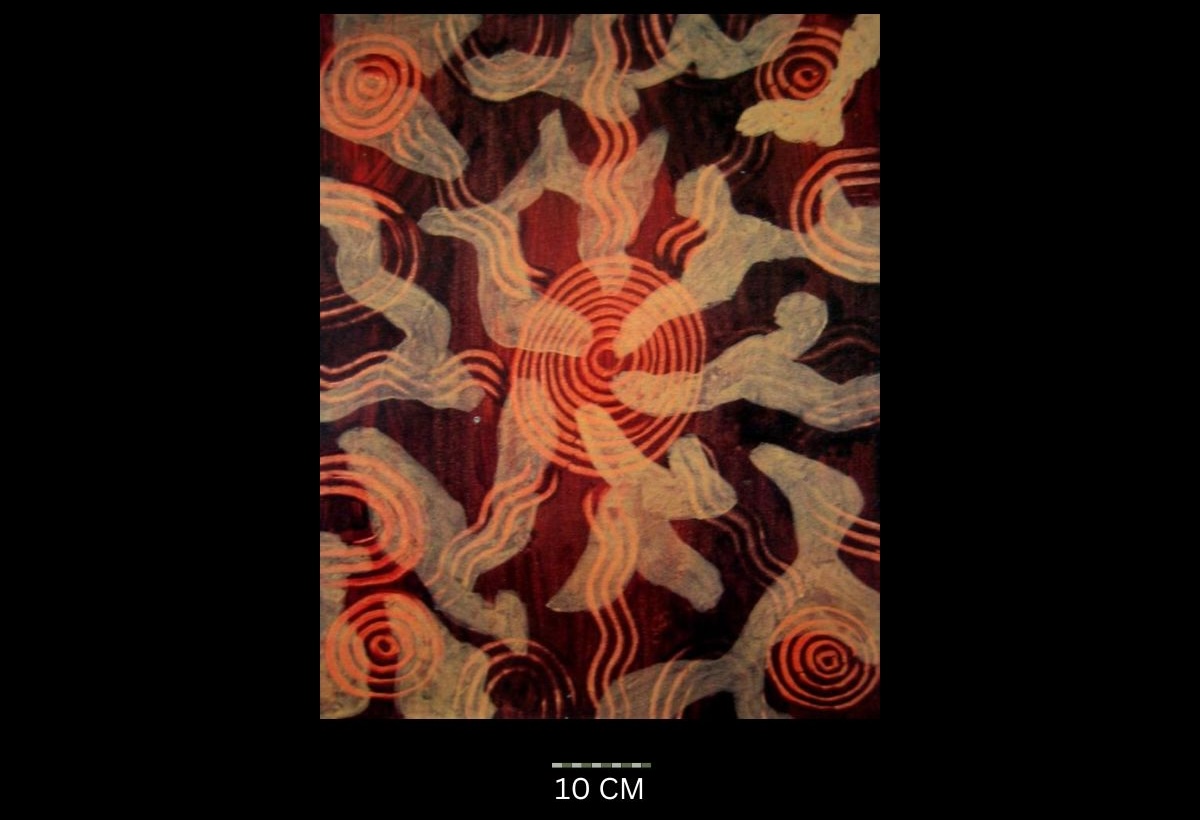
Women Sitting Around a Fire at Sunset
No date recorded
Synthetic polymer on canvas board, inscribed with artist’s name, title, legend and descriptive diagrams on the reverse, gallery label attached,
70 x 61 cm
Hammerprice: A$7,000
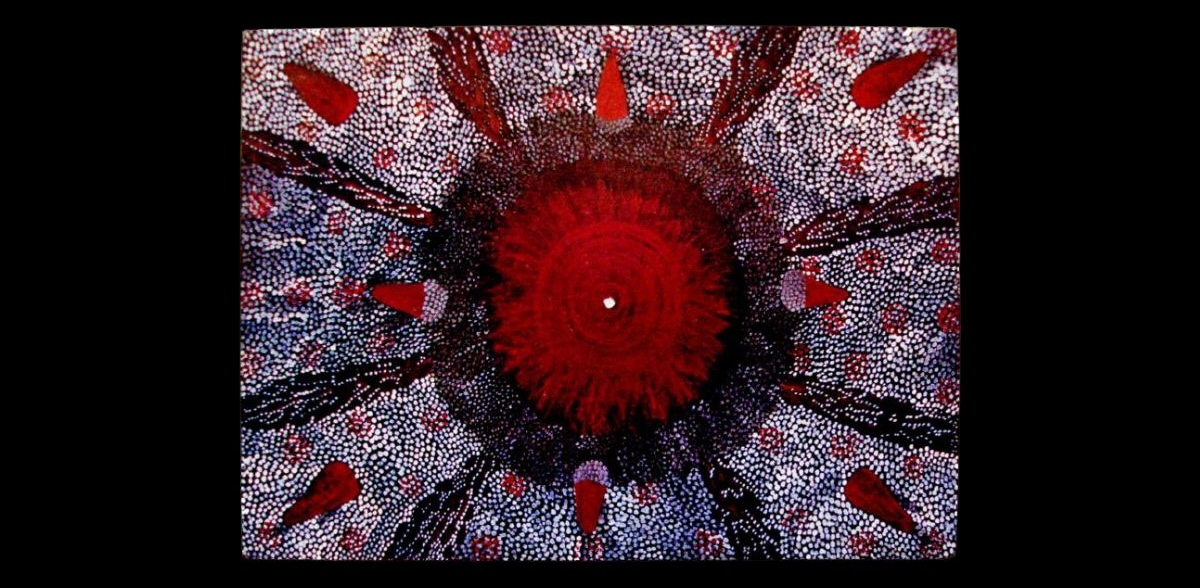
Warlugulong – Bush Fire Dreaming c. 1979
Synthetic polymer paint on canvas board
No size recorded
Hammerprice: A$4,000
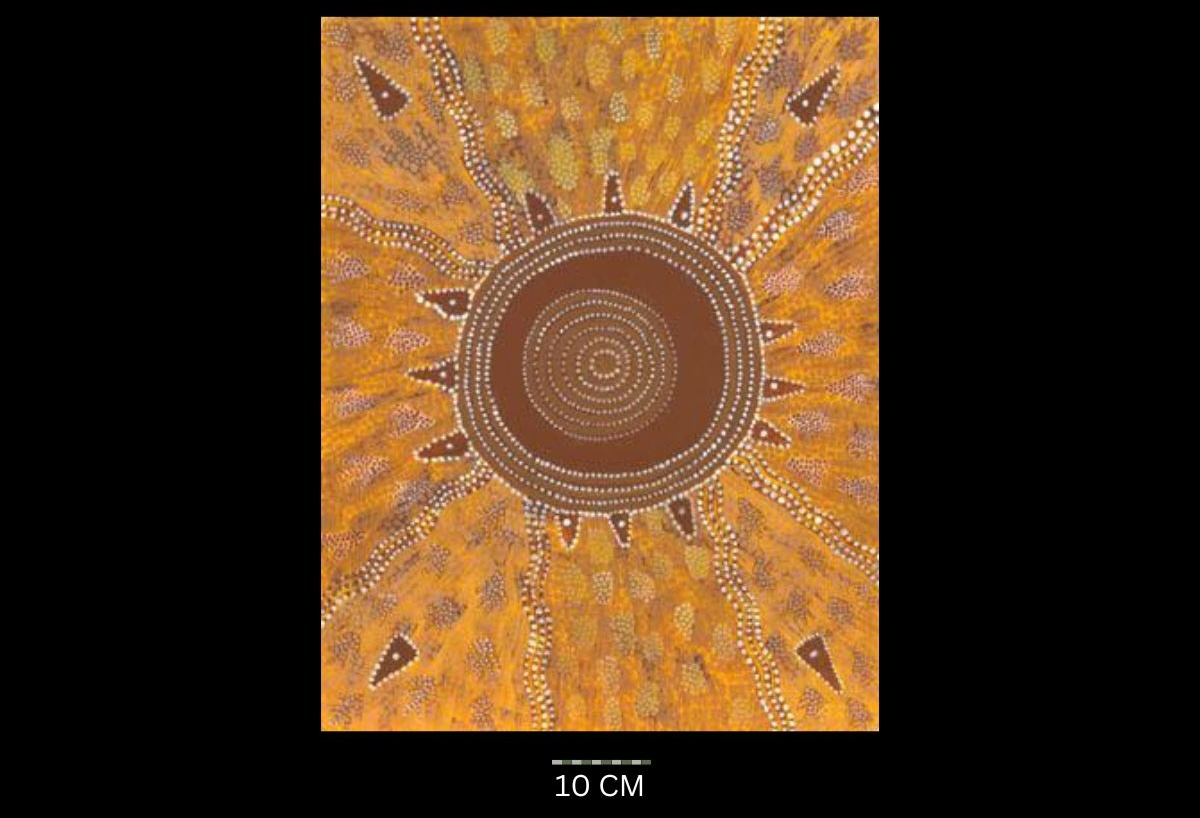
Untitled 1979
Synthetic polymer paint on canvas board, bears artist’s name, language group, size, and Papunya Tula Artists catalogue number tl790116 on the reverse,
60 x 71 cm
Hammerprice: A$14,000
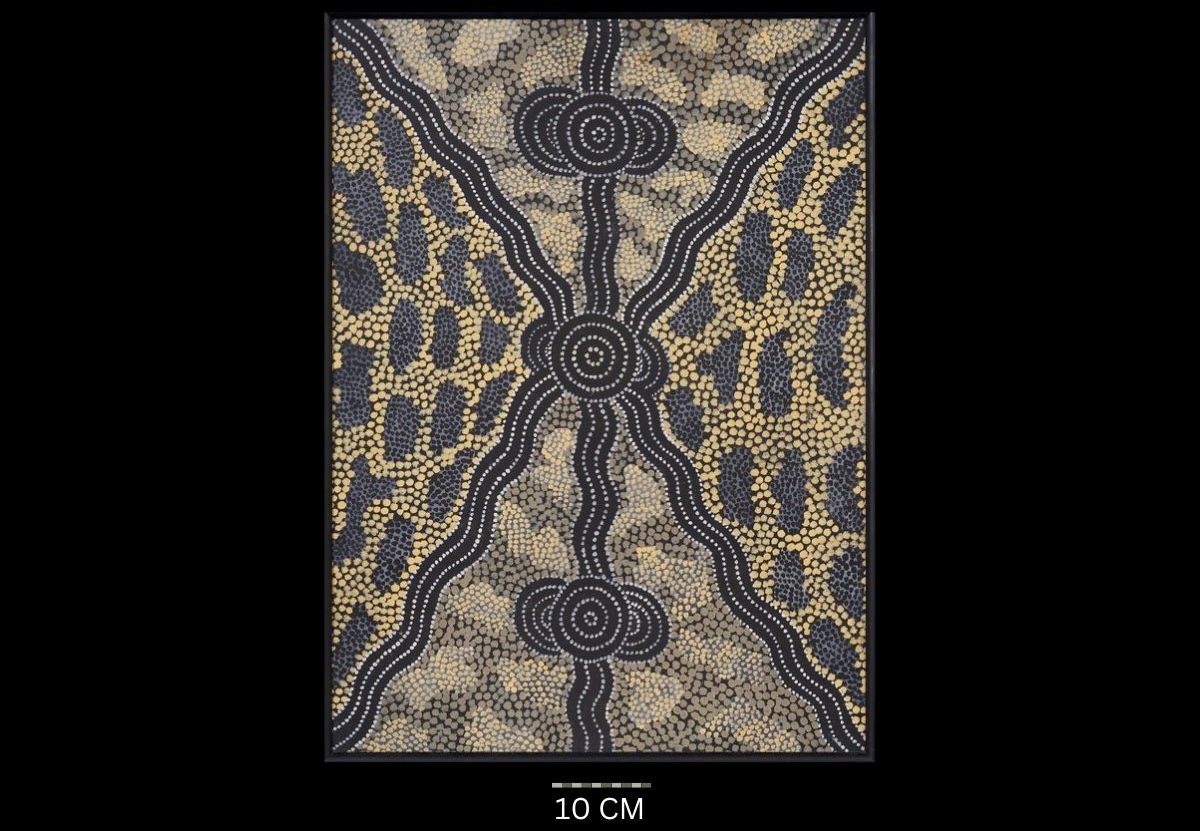
Dreamtime travels of the Irranypa, 1979
Synthetic polymer paint on canvas board,
75 x 55 cm
Hammerprice: A$13,000
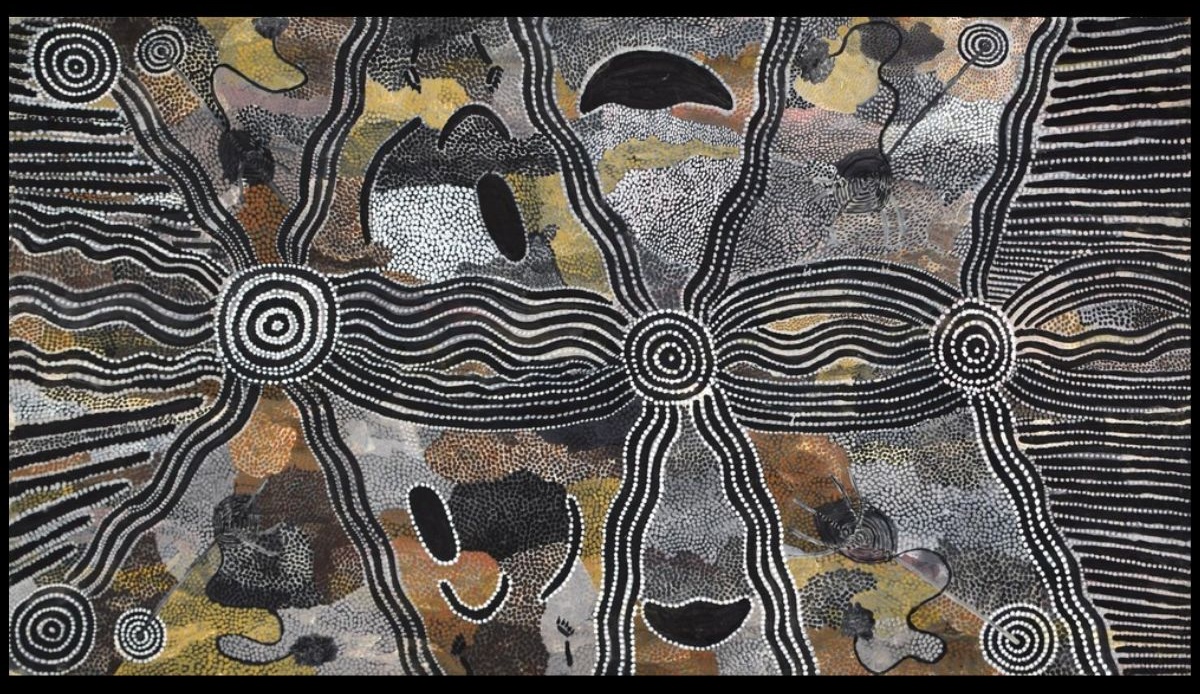
Love Story , 1979
Synthetic polymer paint on cotton duck,
95 x 170 cm
Hammerprice: A$36,000
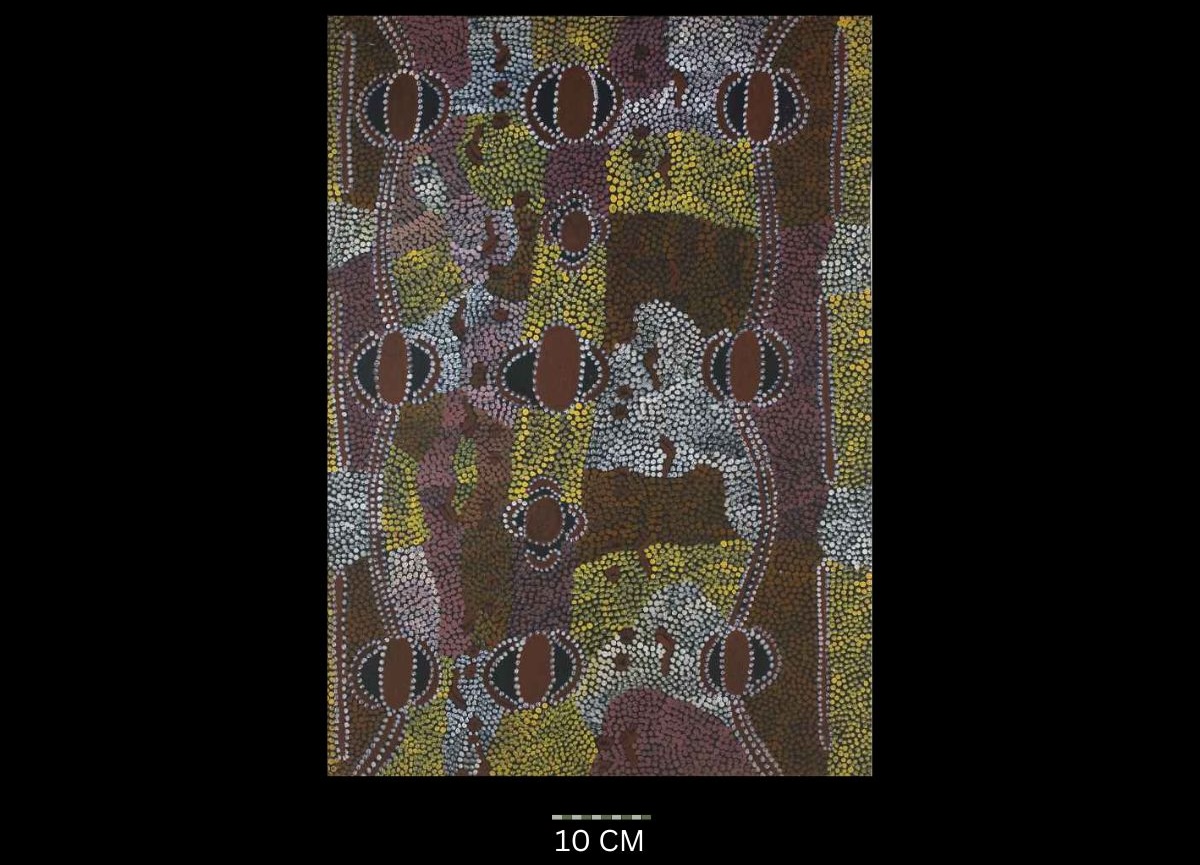
Possum Women’s Dreaming 1979
Synthetic polymer paint on board, bears artist’s name, title and date on the reverse and bears artist’s name, title, date, medium and size on Utopia Art Sydney label on the reverse,
76 x 54 cm
Hammerprice: A$5,500
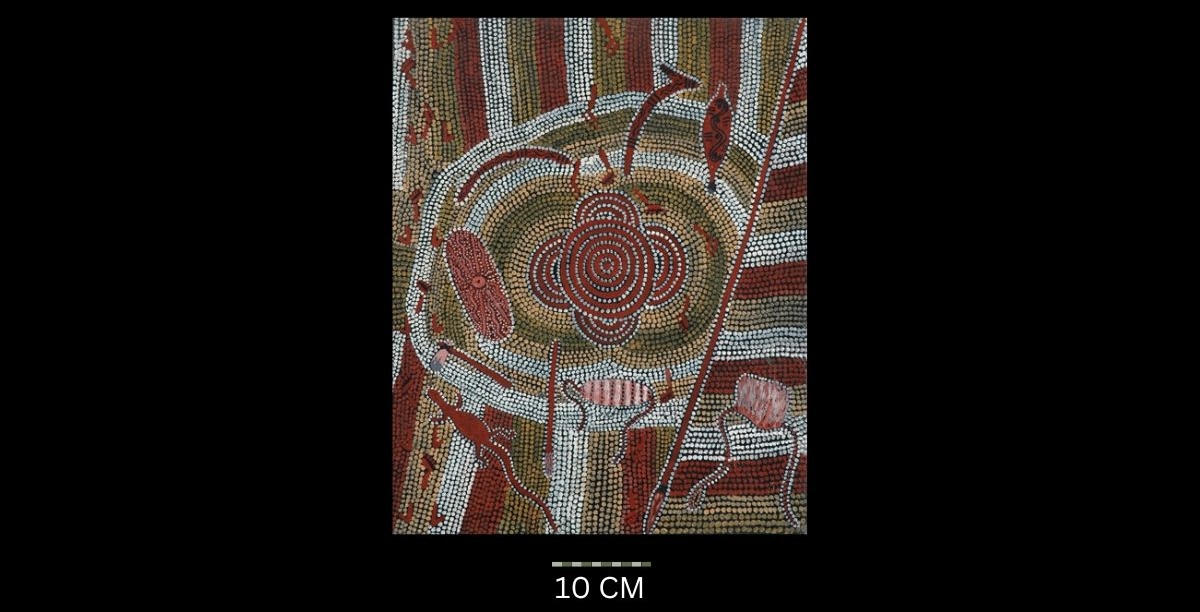
Possum Ancestor Story c. 1980
Acrylic on canvas,
51.5 x 41.5 cm
Hammerprice: A$3,800
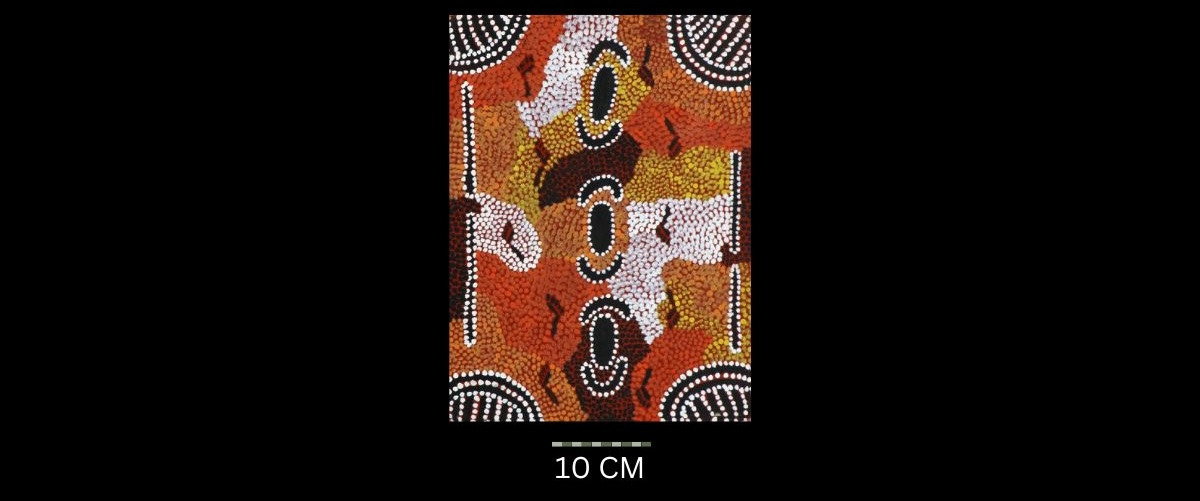
Mens Dreaming, c. 1980
Synthetic polymer paint on canvas on board,
30.5 x 40.5 cm
Hammerprice: A$3,400
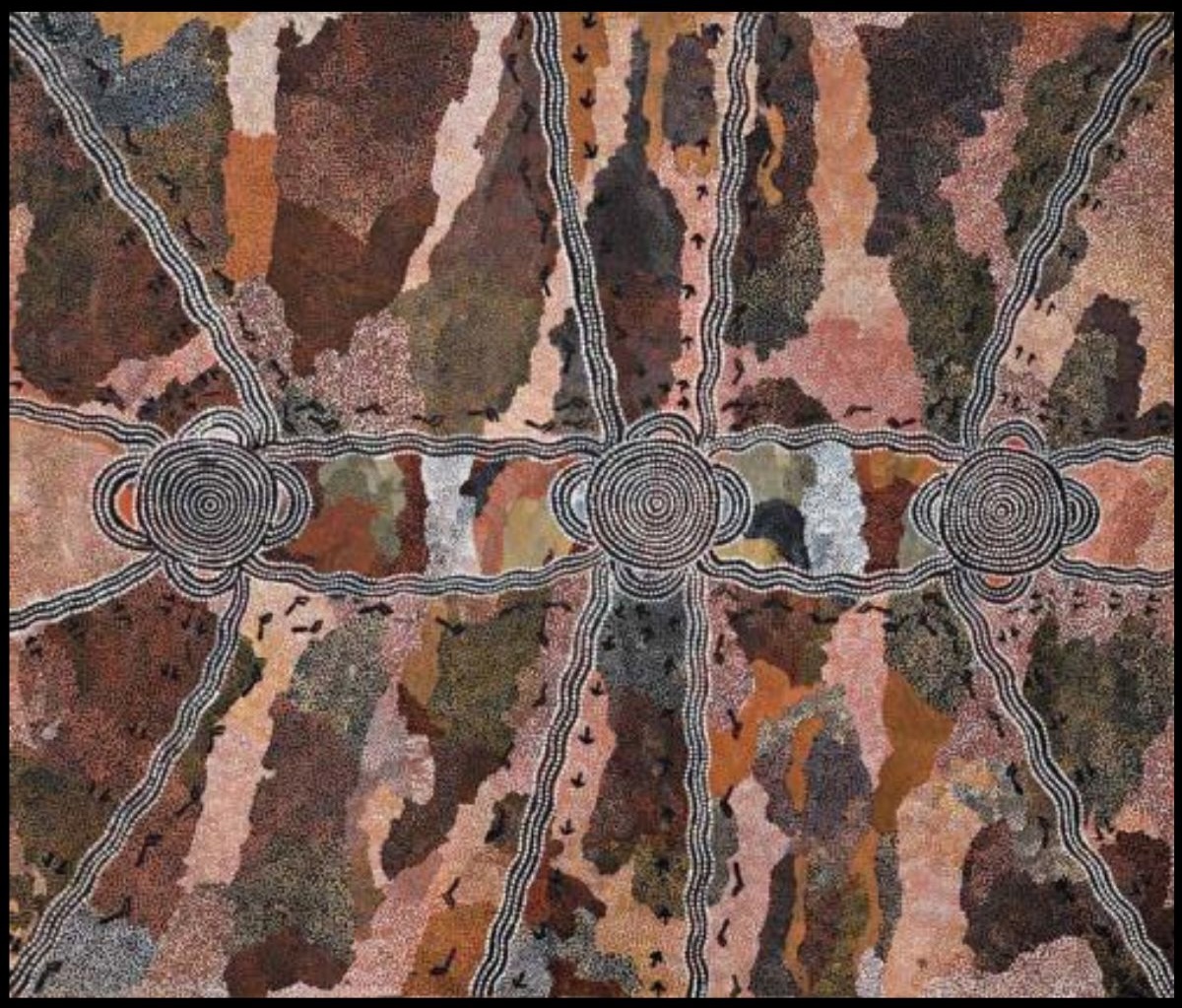
Kangaroo at Ritjulnya 1982
Synthetic polymer paint on linen, bears Papunya Tula Artists catalogue number TL820209 on the reverse,
152 x 181 cm
Hammerprice: A$170,000
All images in this article are for educational purposes only.
This site may contain copyrighted material the use of which was not specified by the copyright owner.
All images are the copyright of the Artists estate and the consignee of the artworks sold.
Other Articles that show values achieved by other Papunya artists
Mick Namarari Tjapaltjarri Artworks
Charlie Tawara Tjungurrayi artworks
Selling at Auction
Selling artwork at auction can sometimes yield favorable results, particularly when multiple interested bidders compete, potentially driving up the final sale price. This environment can occasionally lead to inexperienced buyers bidding more than they originally intended, which can benefit the seller in competitive situations.
In the niche market of Aboriginal art however this is the exception with mosy potential bidders being knowledgable and well researched
Downside to Selling at Auction
Auctions come with inherent limitations. One significant drawback is that they do not achieve the full market potential of an artwork. For instance, if the most motivated buyer values a piece at $10,000 but is aware of a 30% buyer’s premium, they may only be willing to place a maximum bid of $7,000. Meanwhile, the second most motivated buyer who values the work at $6,000 may only bid up to $4,200. As a result, bidding would likely stop at $4,200, and the winning bid might be only one bid higher, say $4,300. After deducting seller’s fees (10%-29%), the final amount received by the seller will be less than $3,900—far below the artwork’s perceived value.
Another risk associated with auctions is limited reach. Potential buyers who may have been willing to pay significantly more might simply not be aware of the auction, not have the money at the time or unable to participate at the scheduled time. This can result in missed opportunities and lower-than-expected sale outcomes.
This dynamic explains why many art dealers are able to purchase artworks at auction and resell them privately at a profit. Their ability to match artworks with motivated collectors, often through targeted private outreach, allows them to capitalize on the limitations of the auction model.
Private Treaty Sales
An alternative to auction is selling through private treaty. This method involves engaging a dealer to offer the artwork directly to known collectors who collect or have a strong interest in a particular artist or genre. The sale is conducted at price agreed buy the dealer and seller, allowing for a more targeted and lucrative transaction.
One key advantage of private treaty sales is flexibility. If the dealer is unable to secure a buyer through private channels, the artwork can still be offered at auction later. This approach often ensures better control over the sales process and often result in a more favorable outcome for the seller, especially when maximizing value is the priority.
I specialise in private treaty sales and if you have a Johnny Warangkula Tjupuurula artwork and you would like to know what I think it could be sold for, please send me an image dimensions and provenance.
Early Papunya Artworks and Articles
All images in this article are for educational purposes only.
This site may contain copyrighted material the use of which was not specified by the copyright owner.
